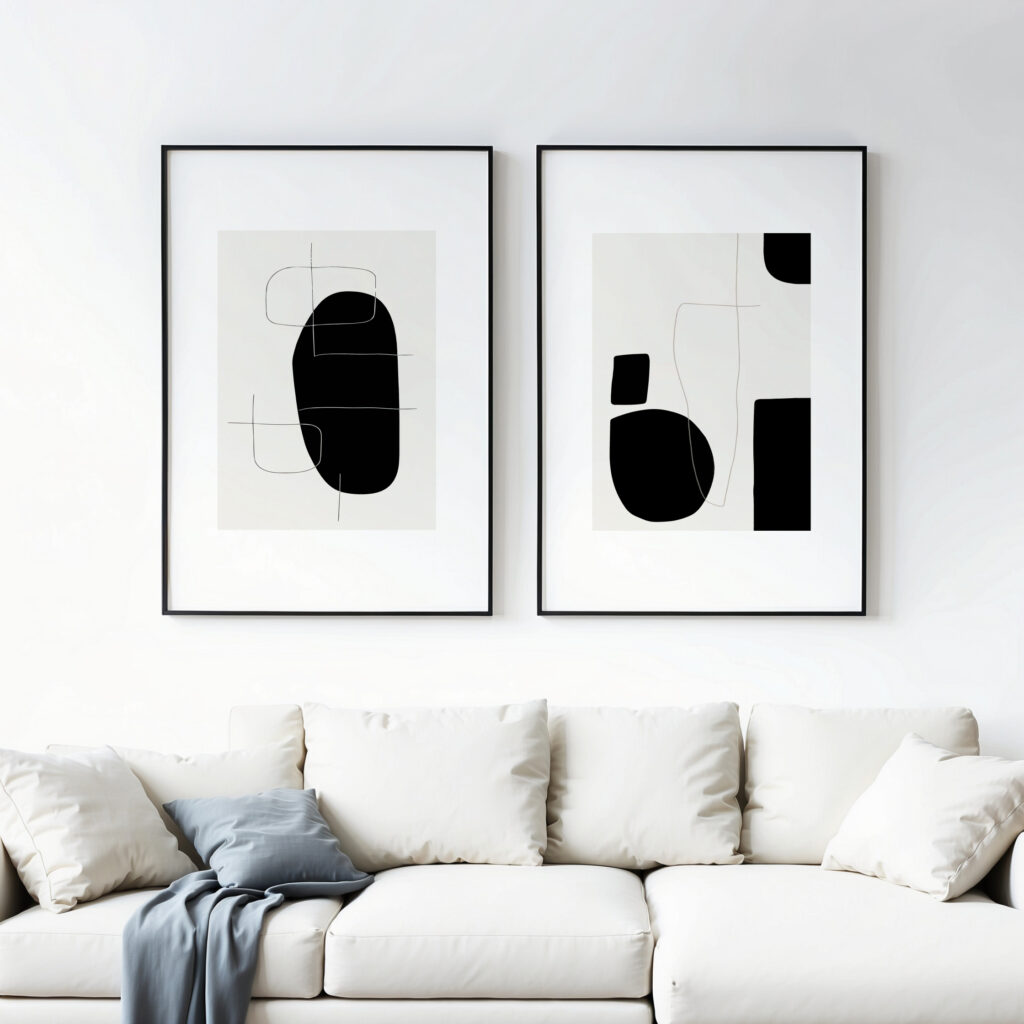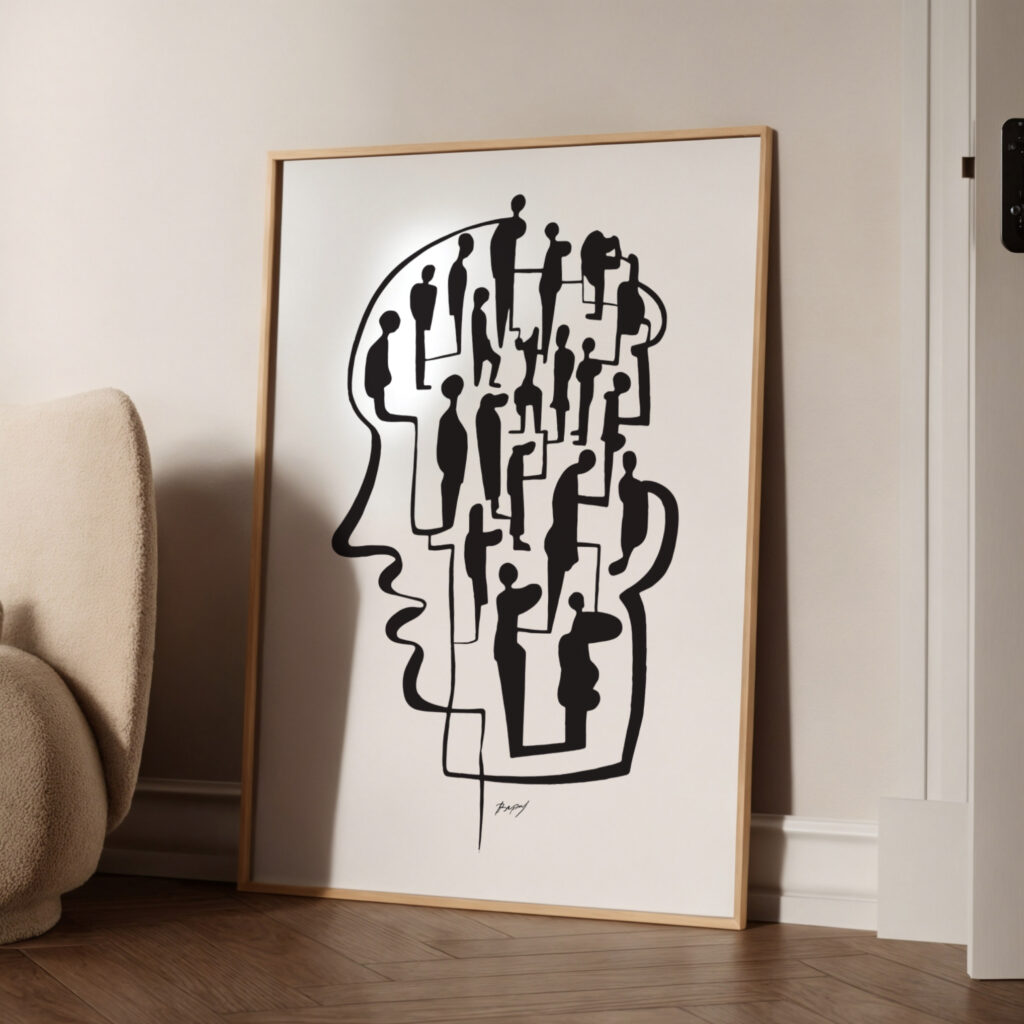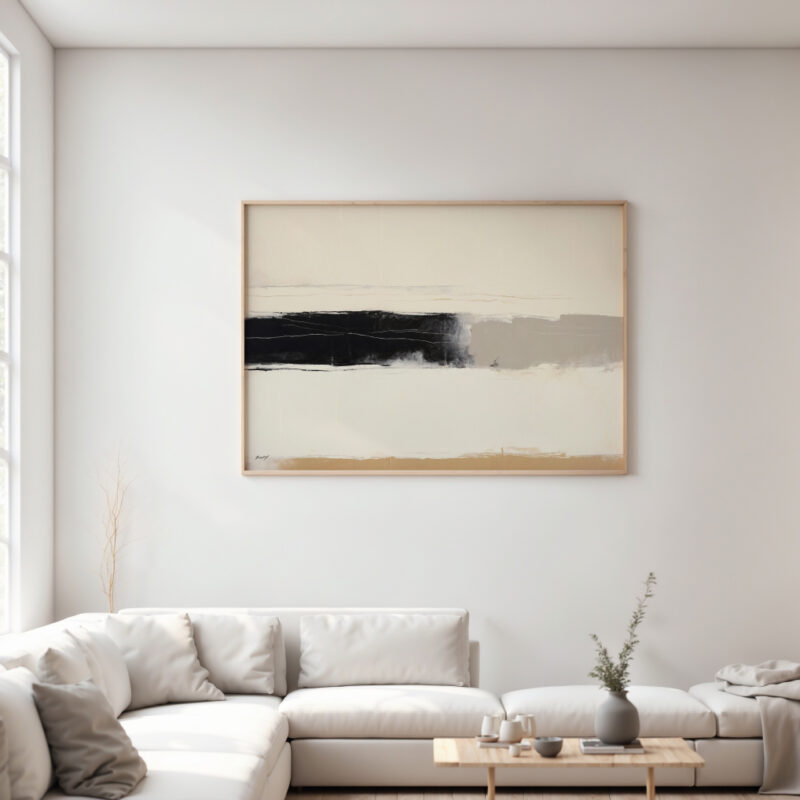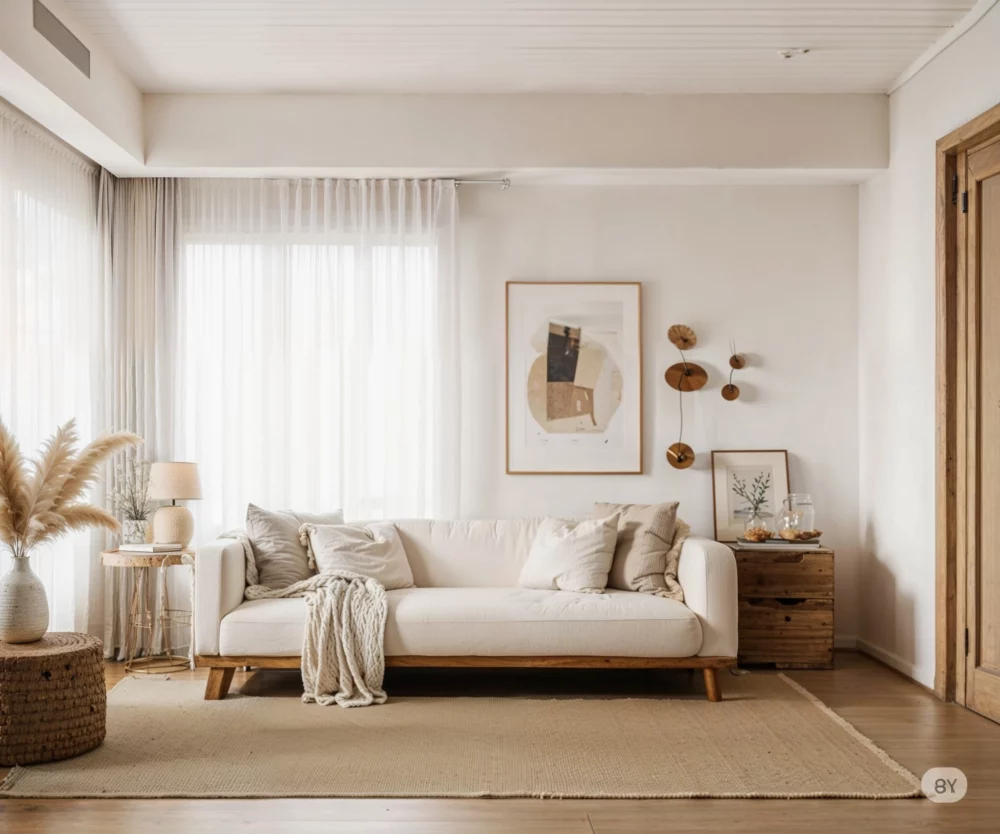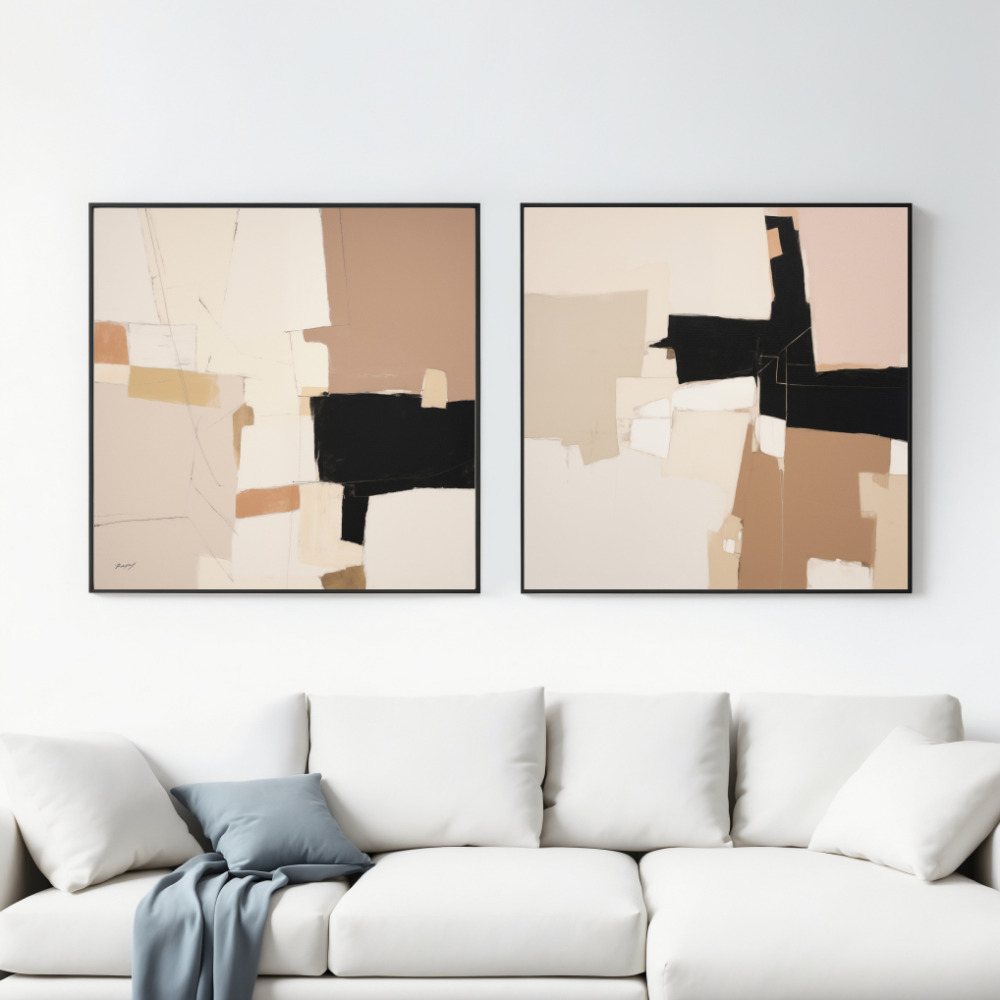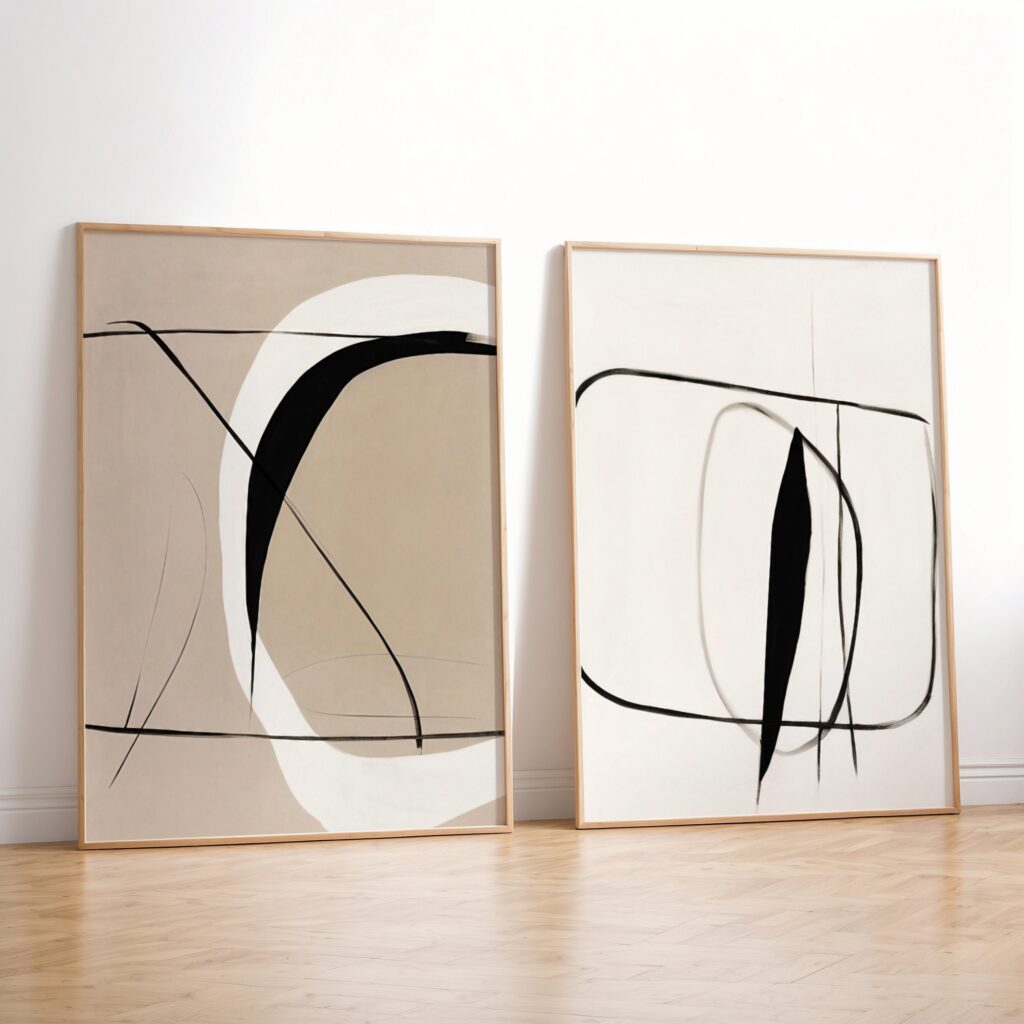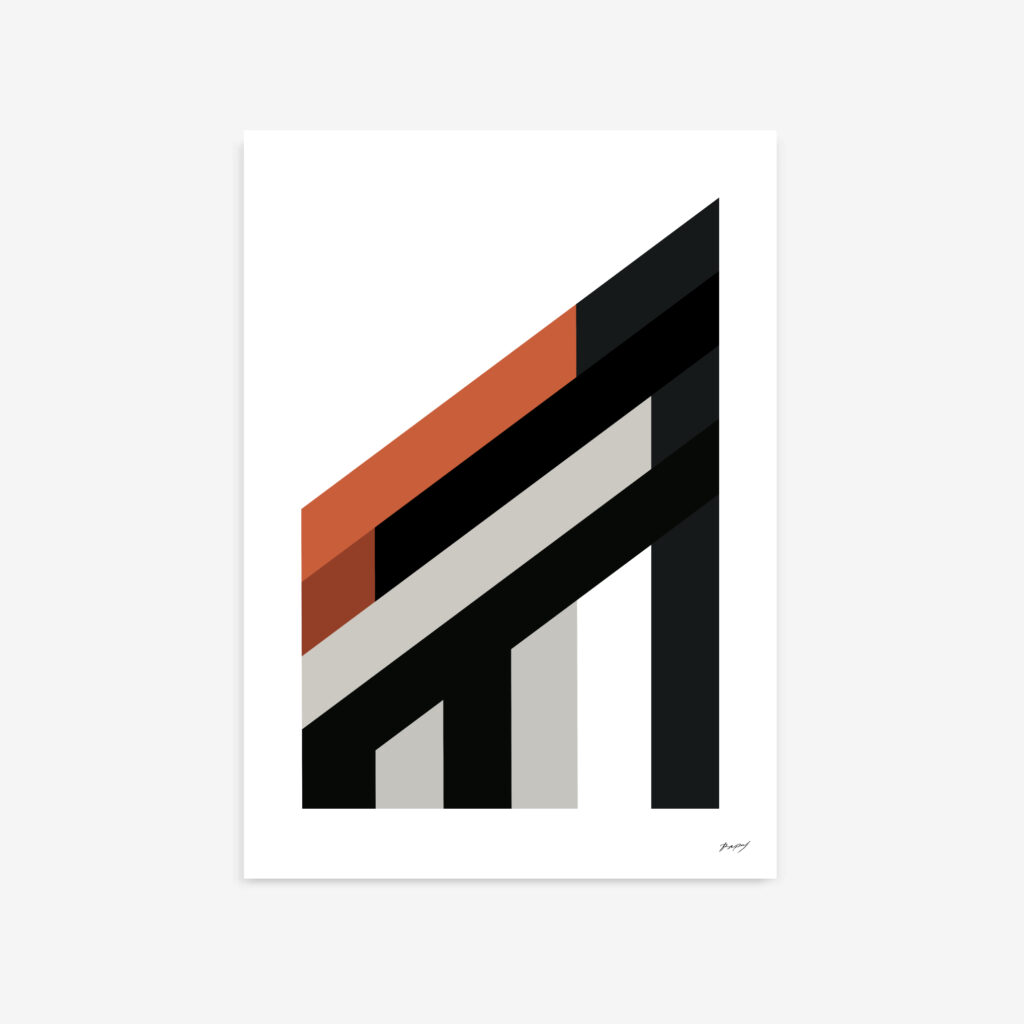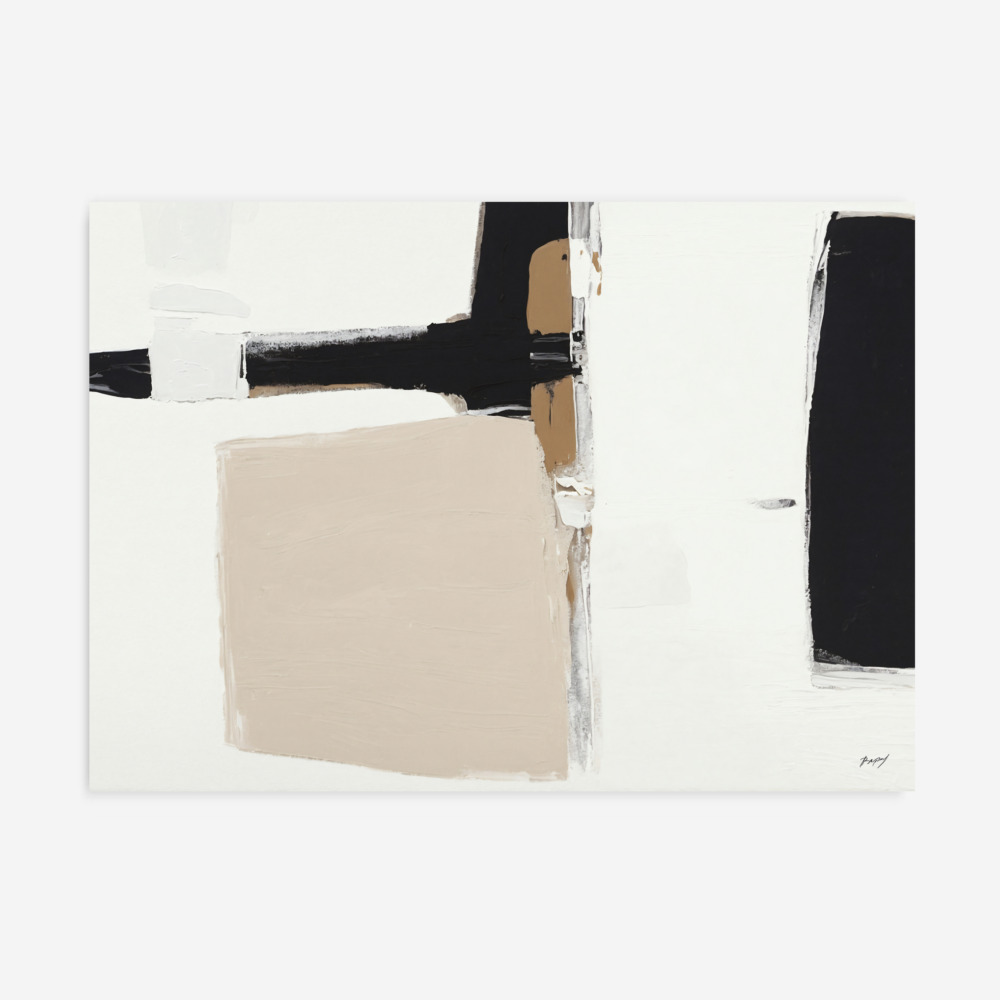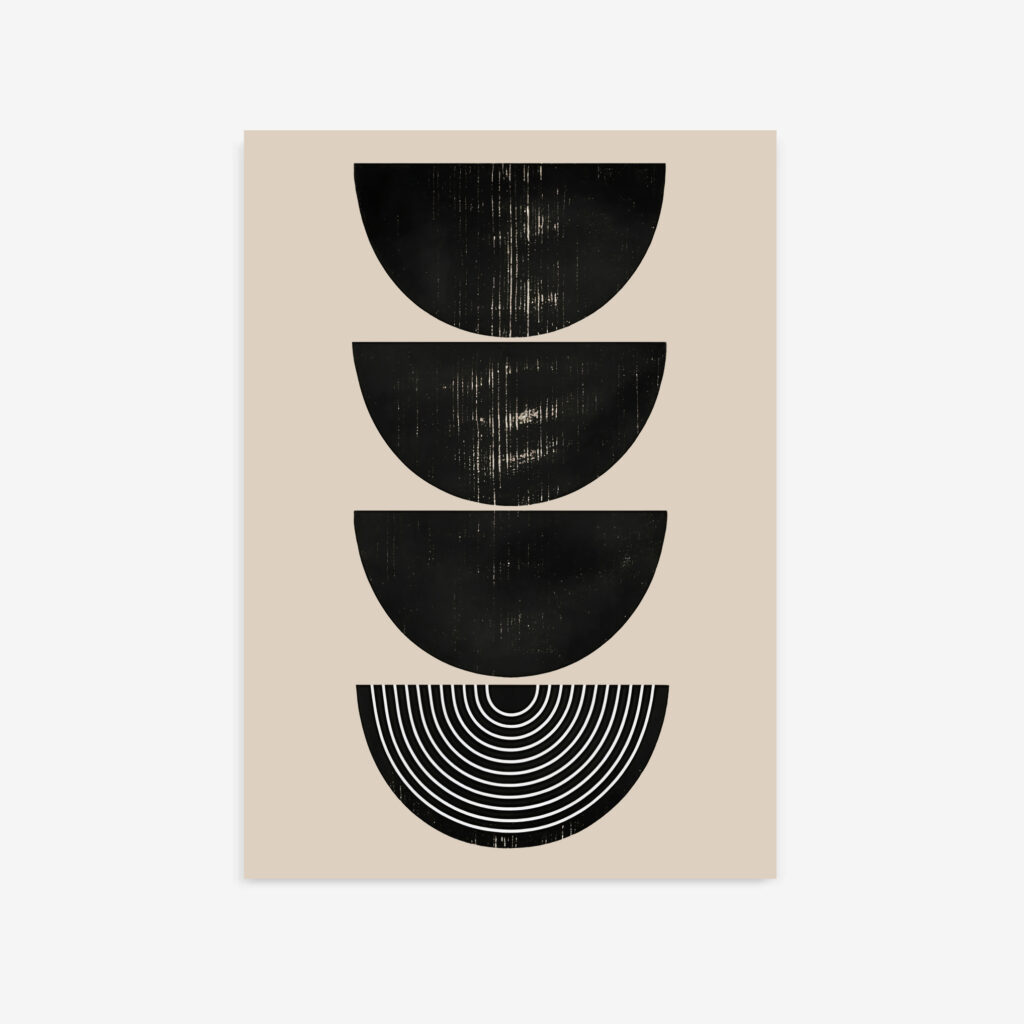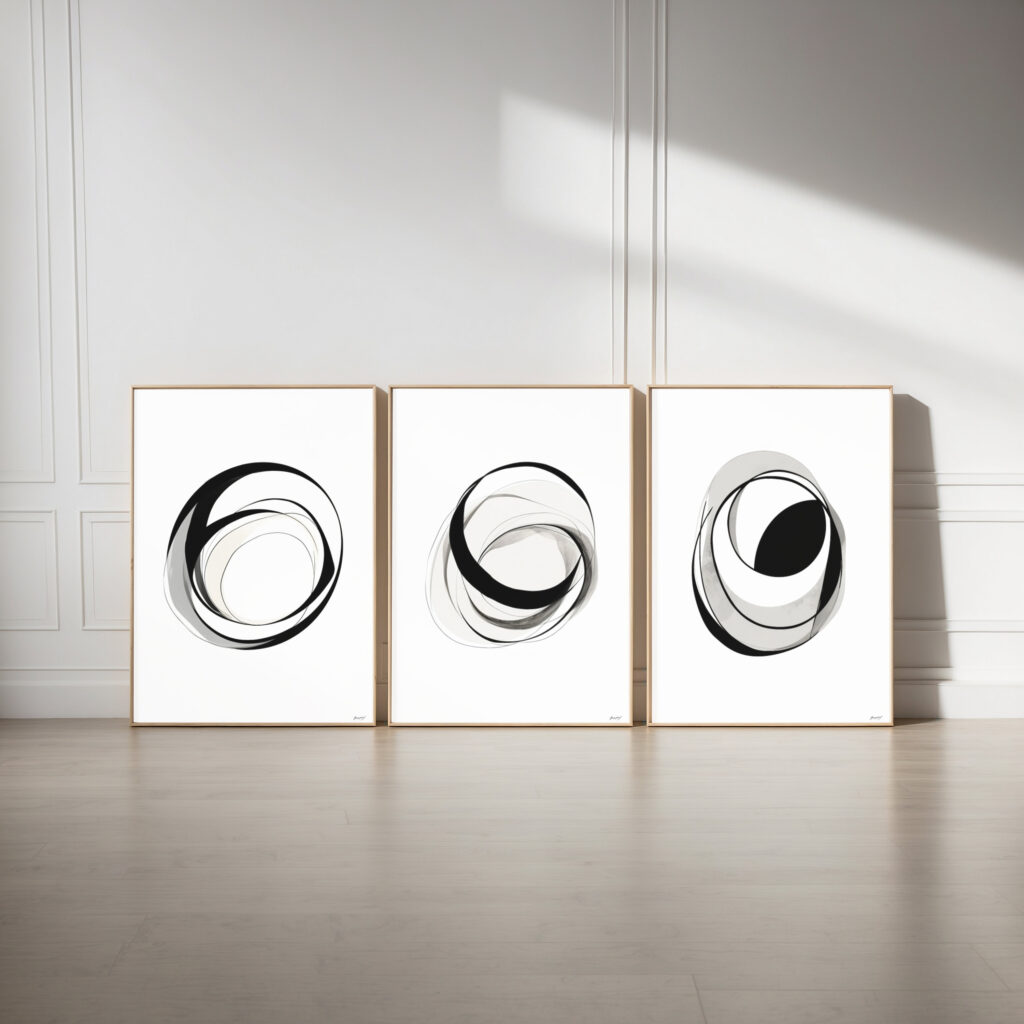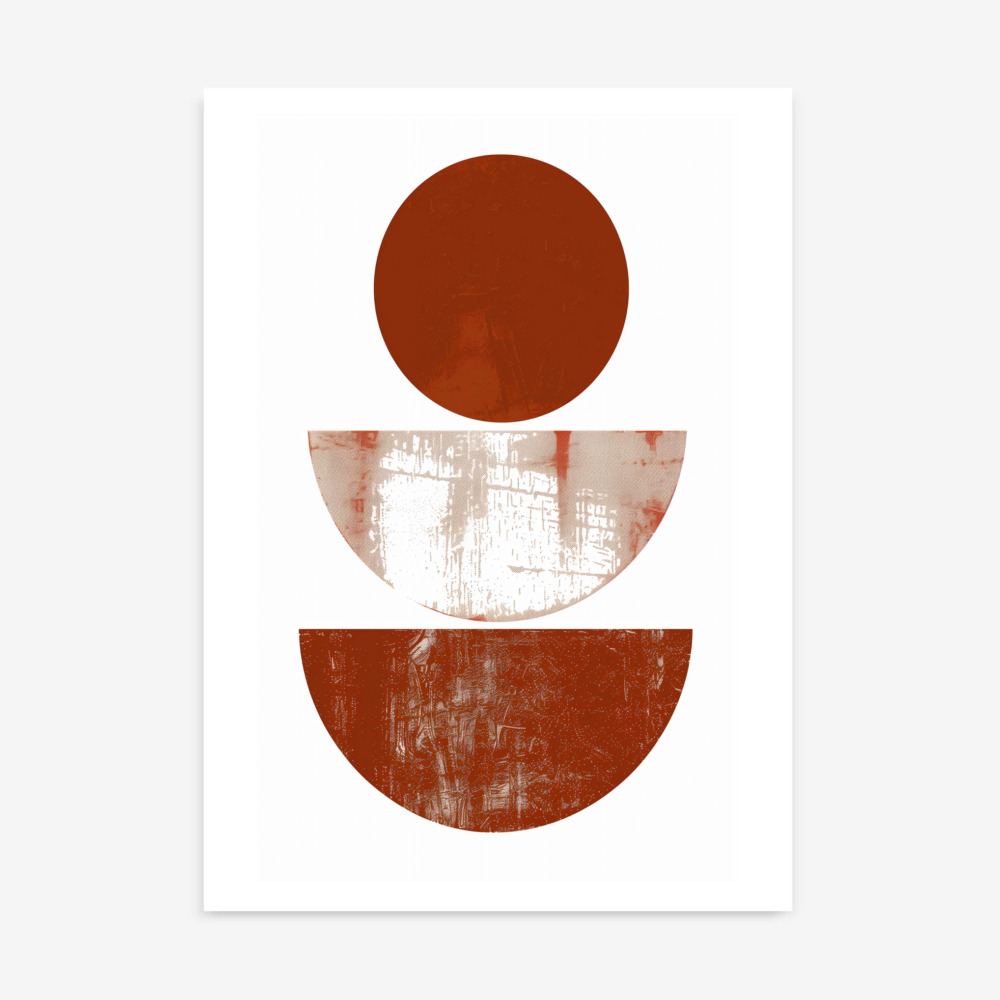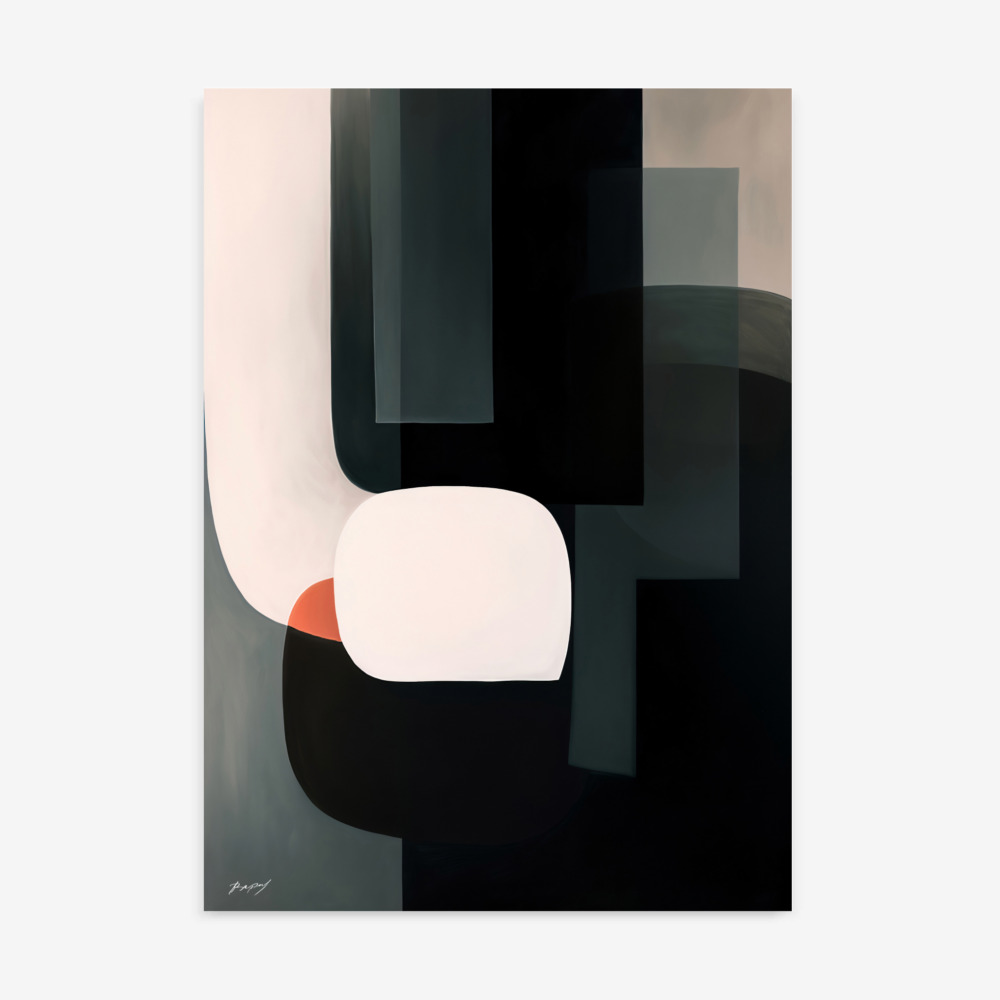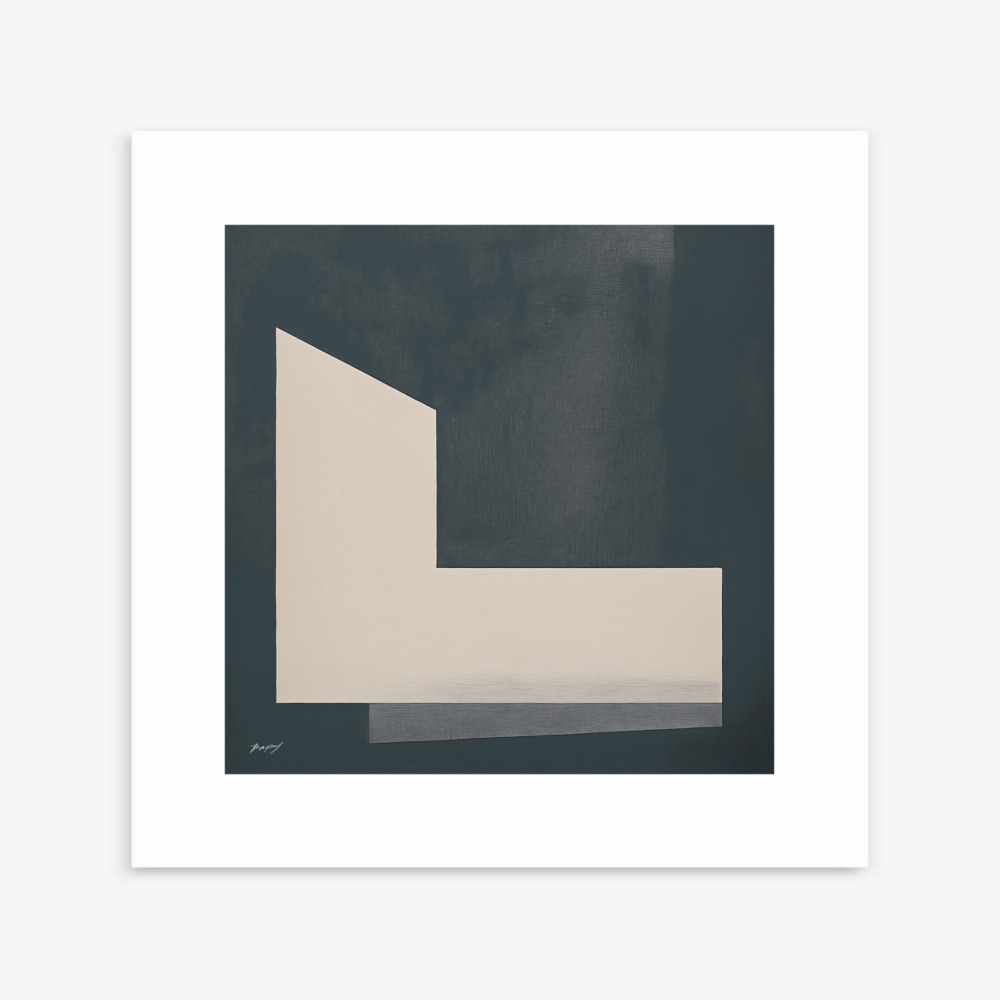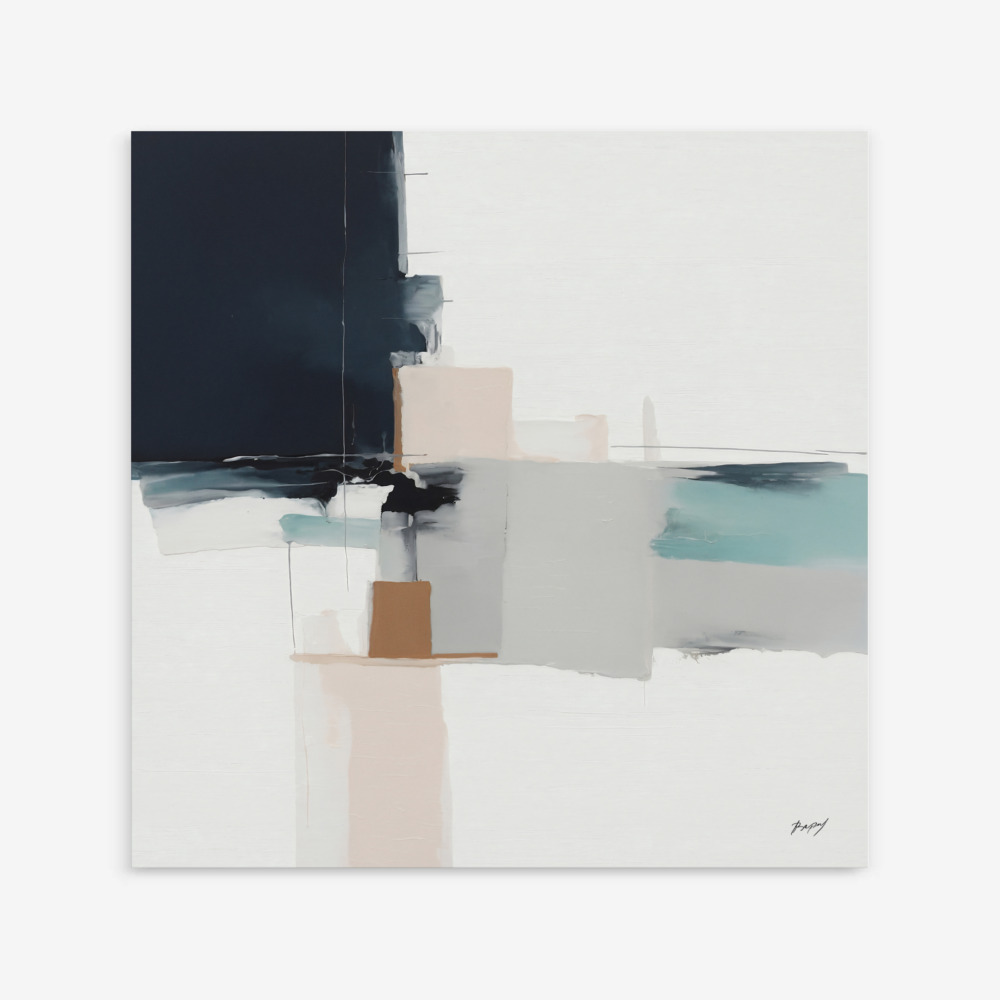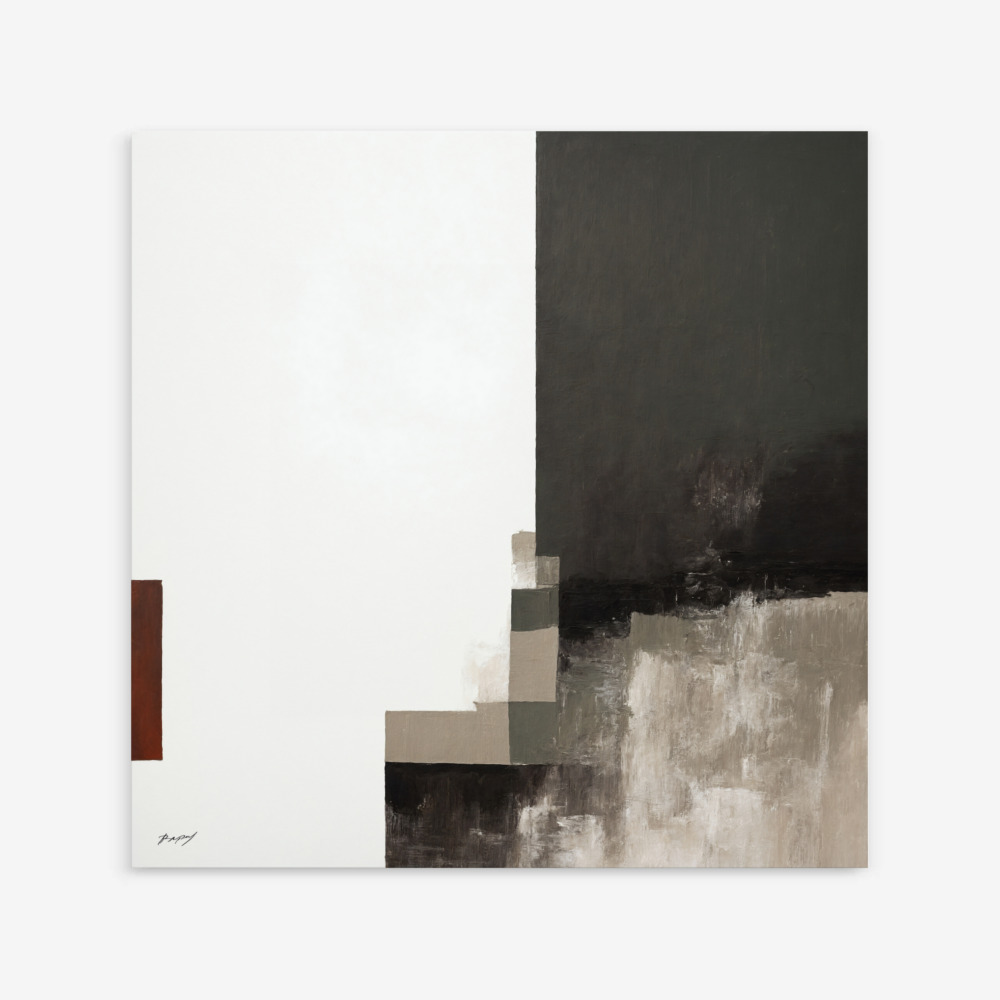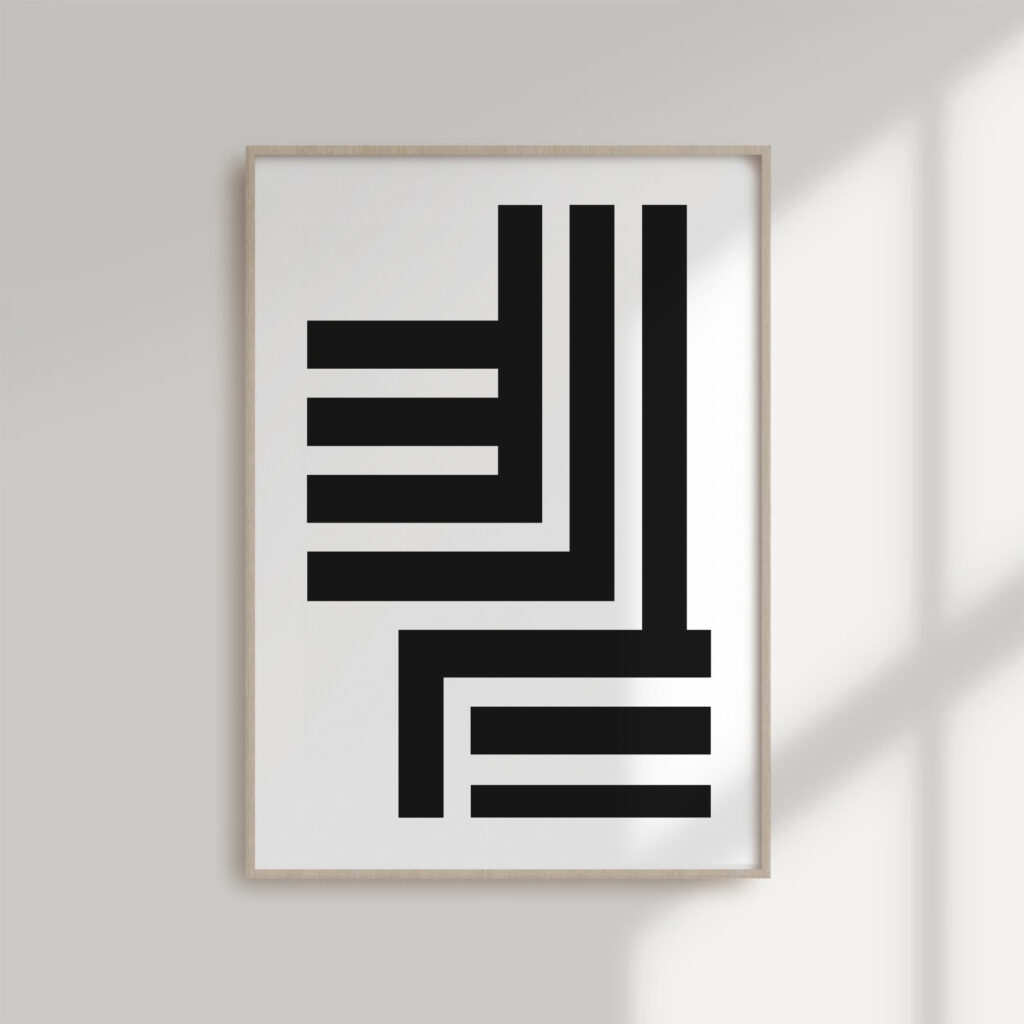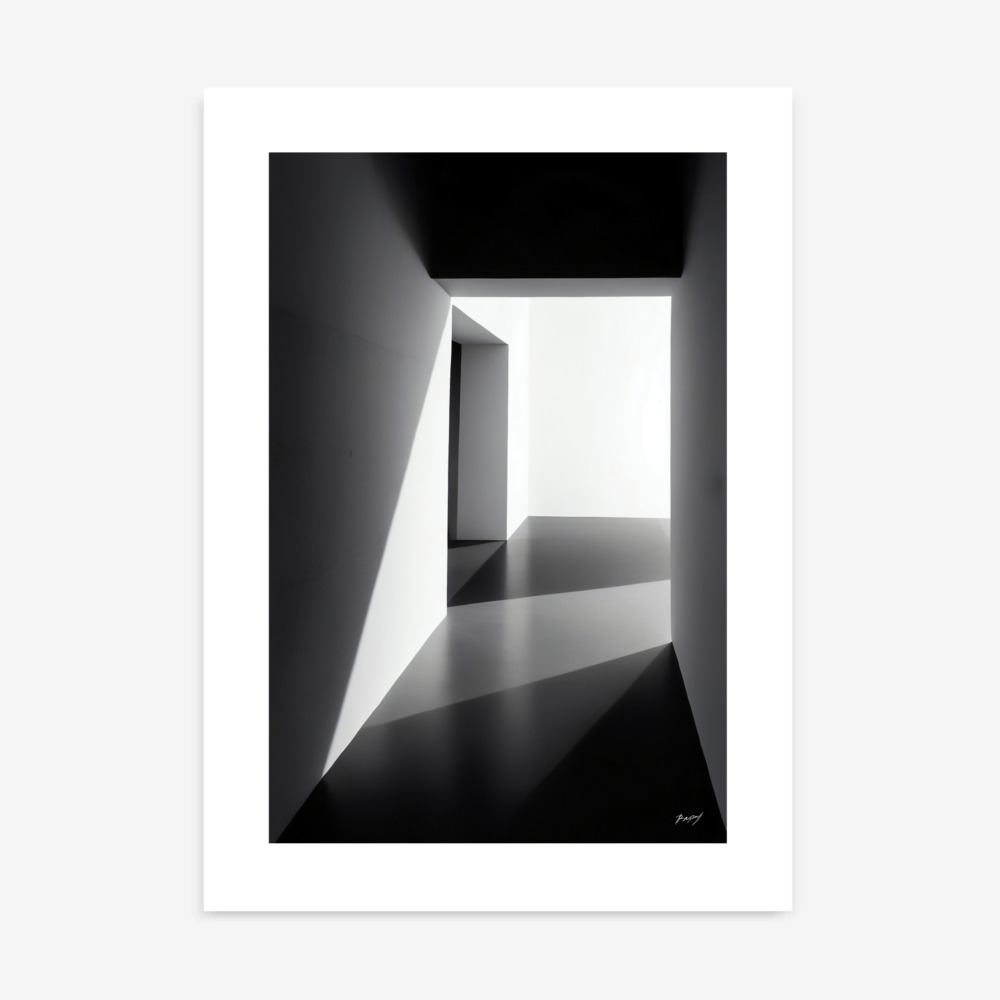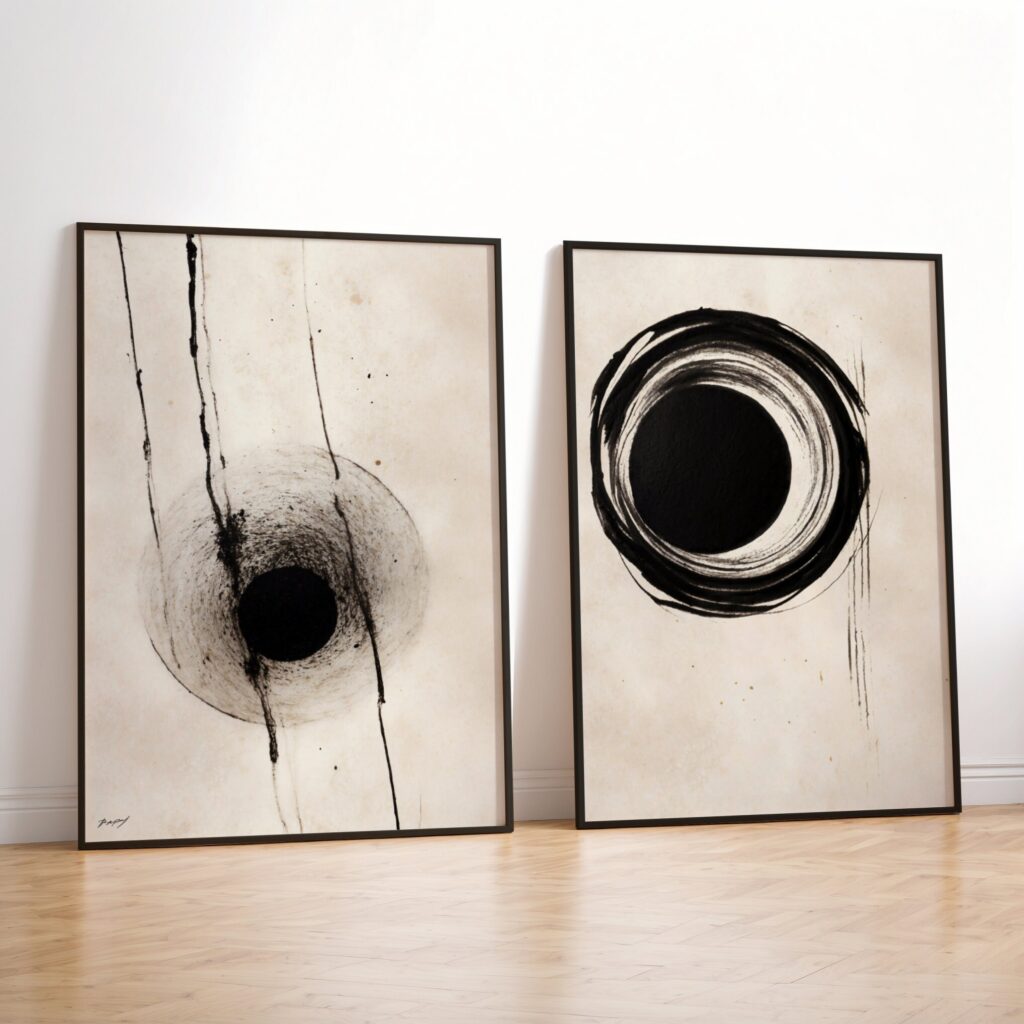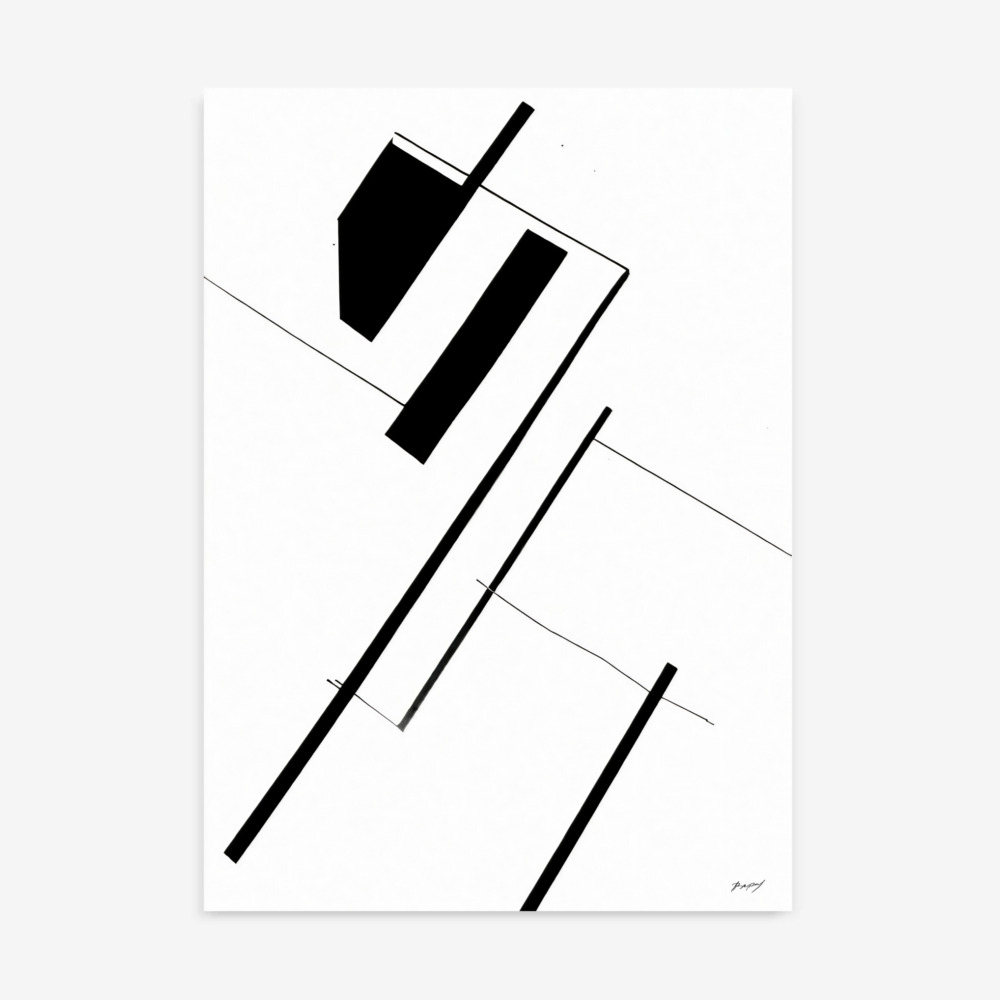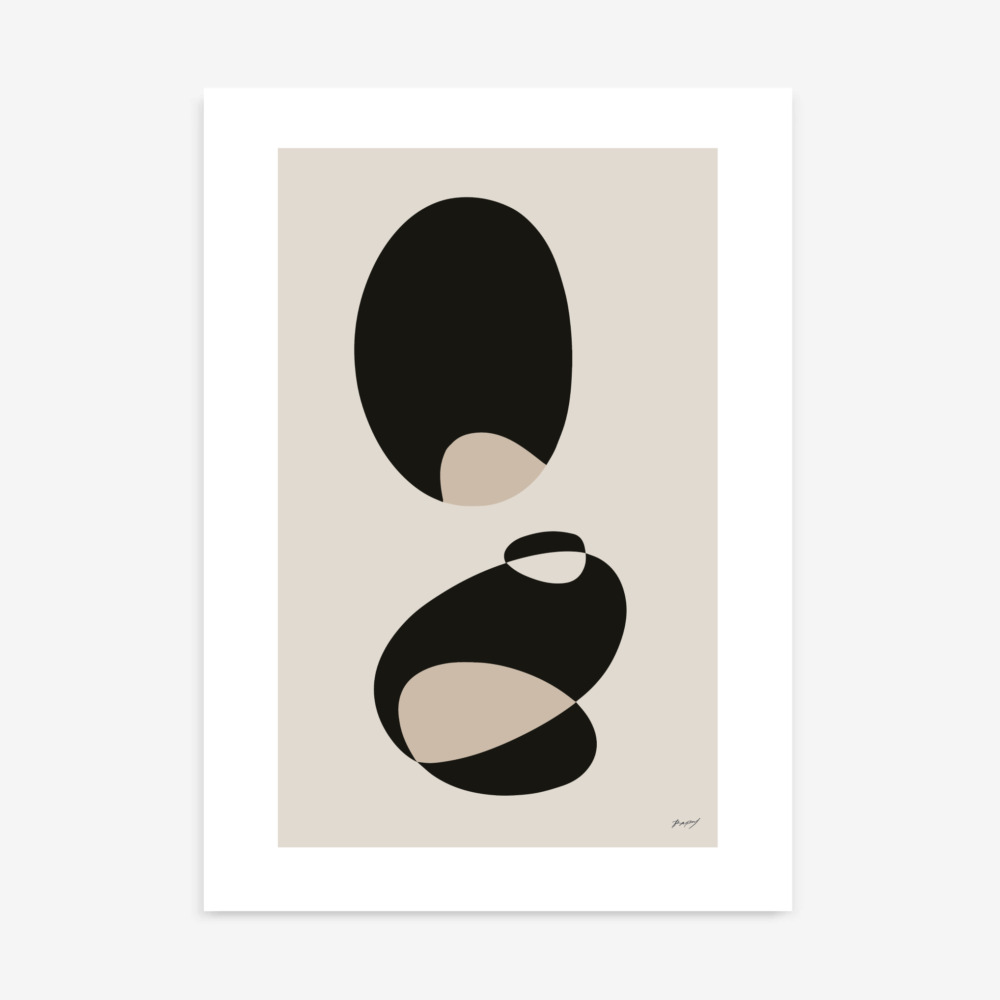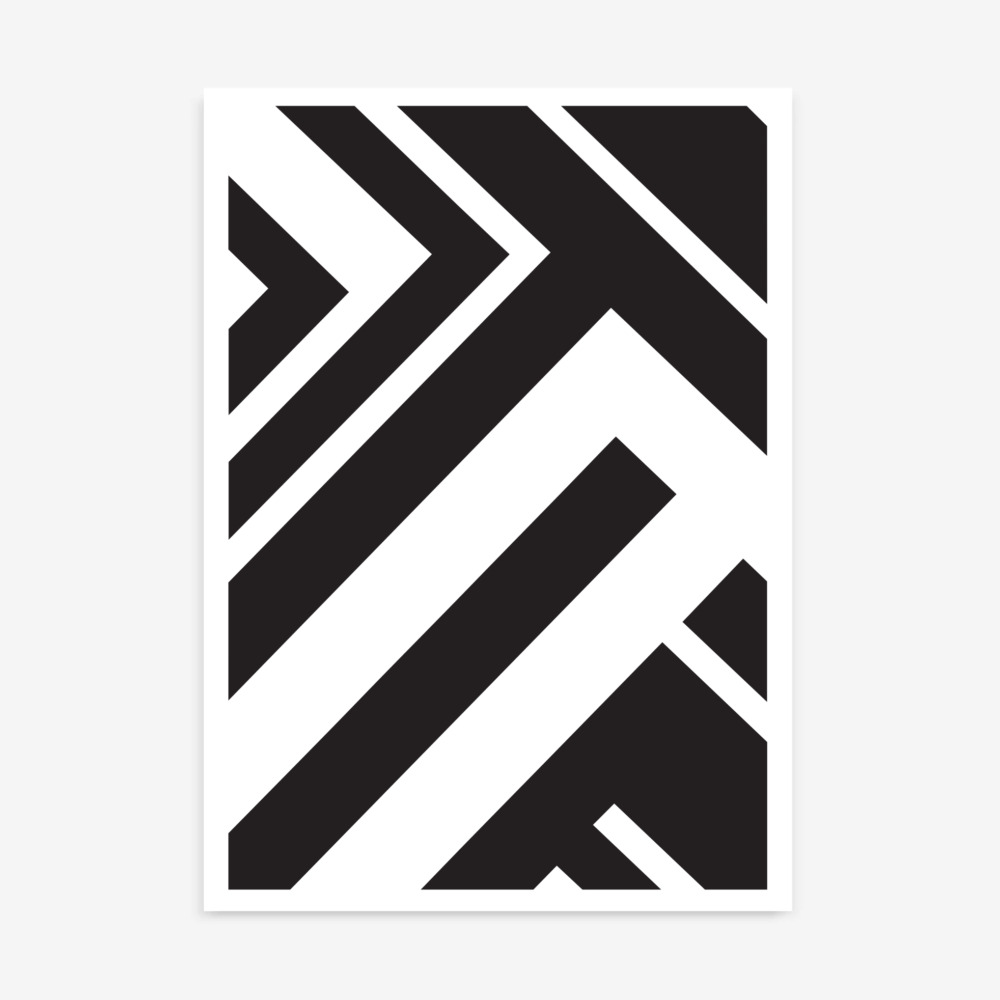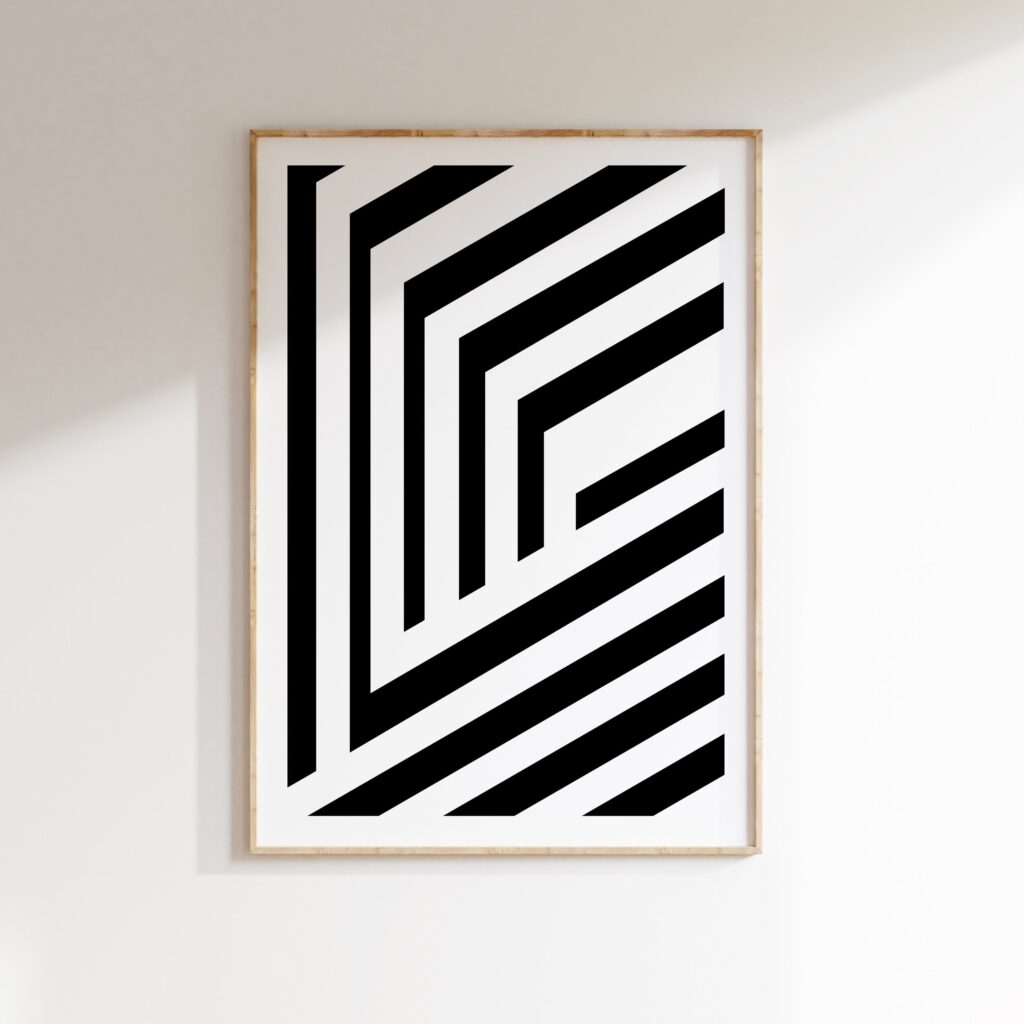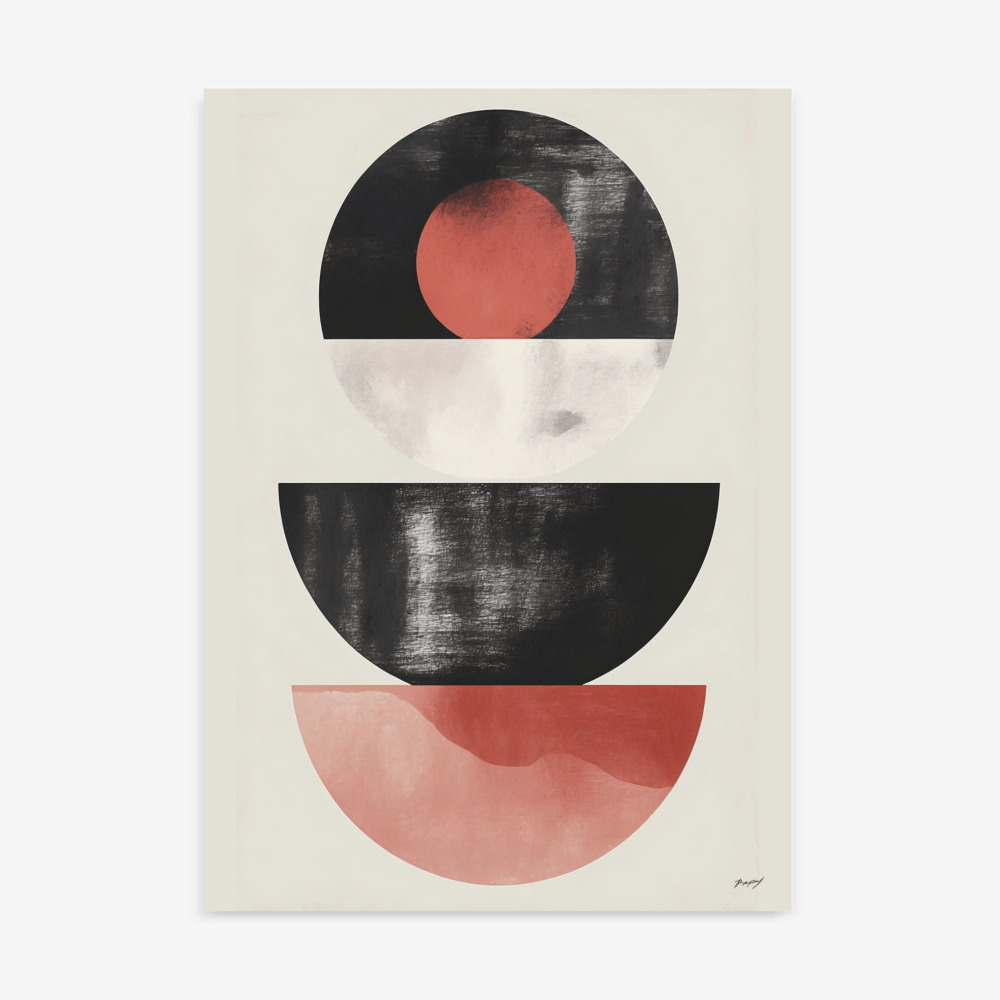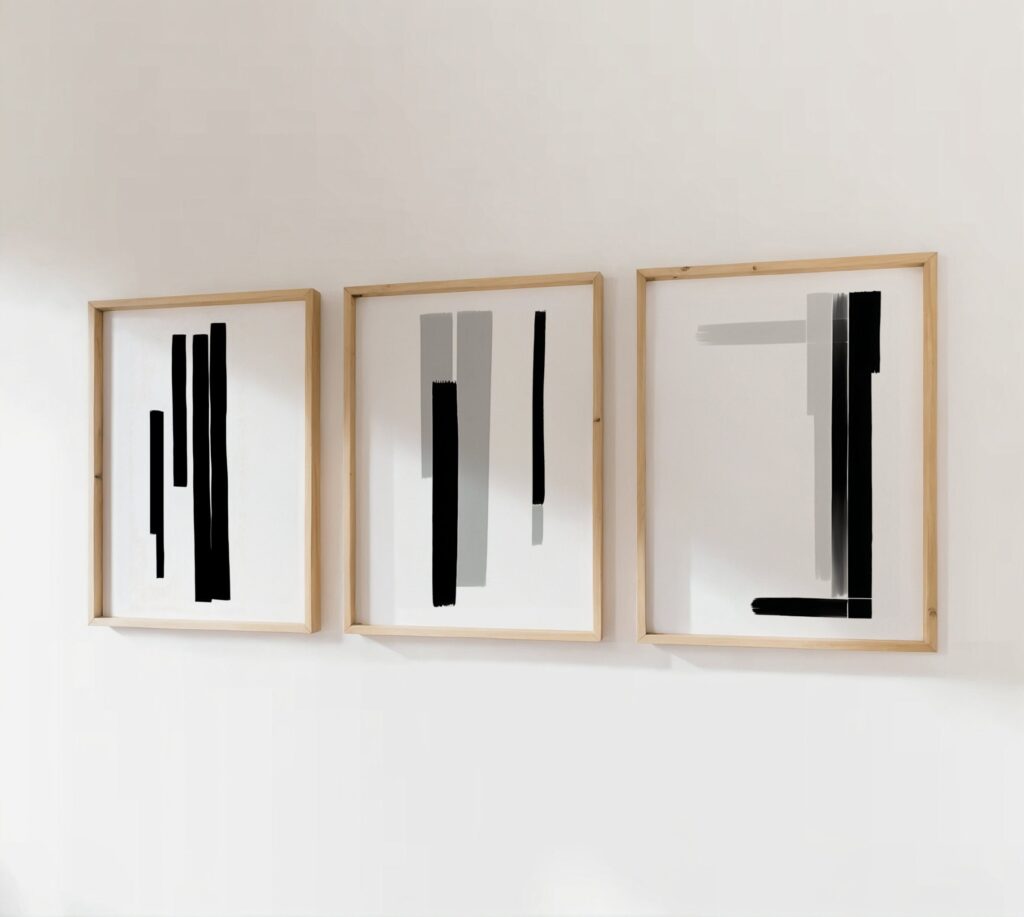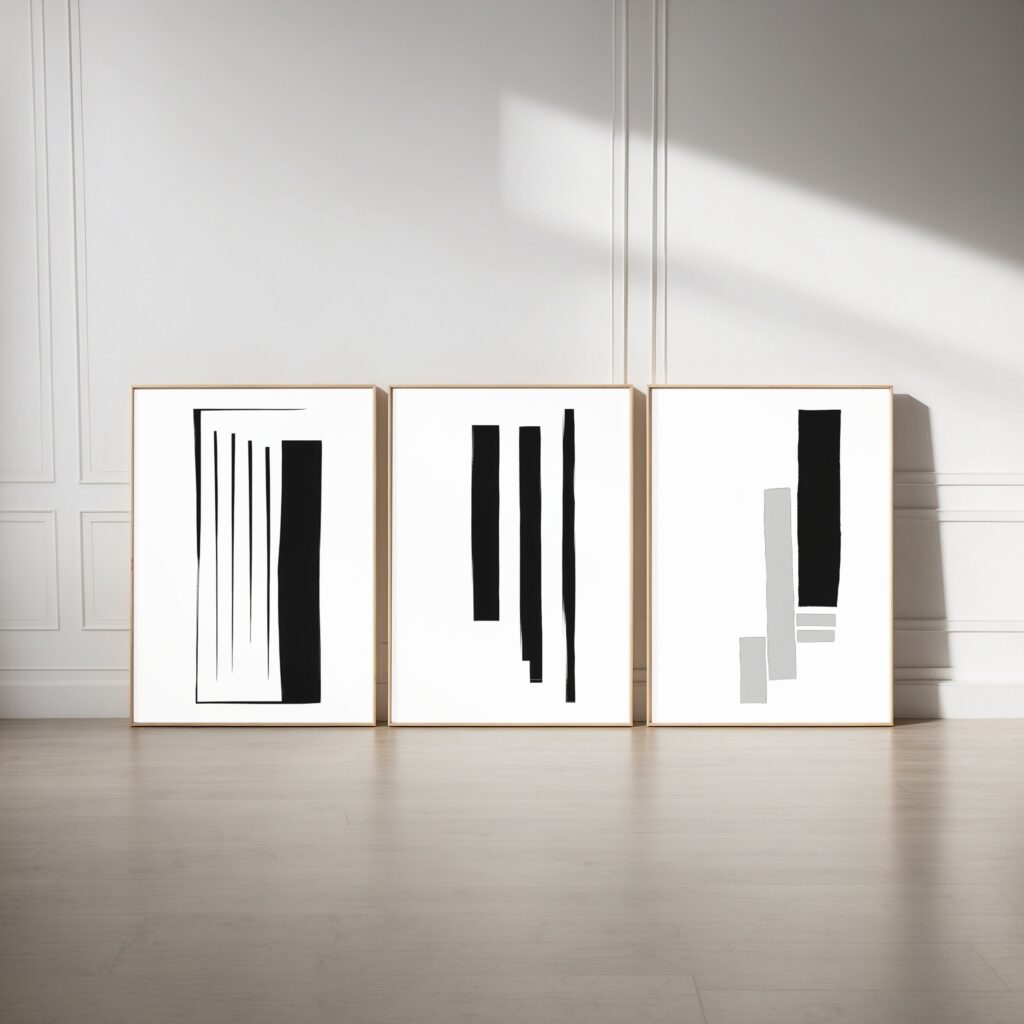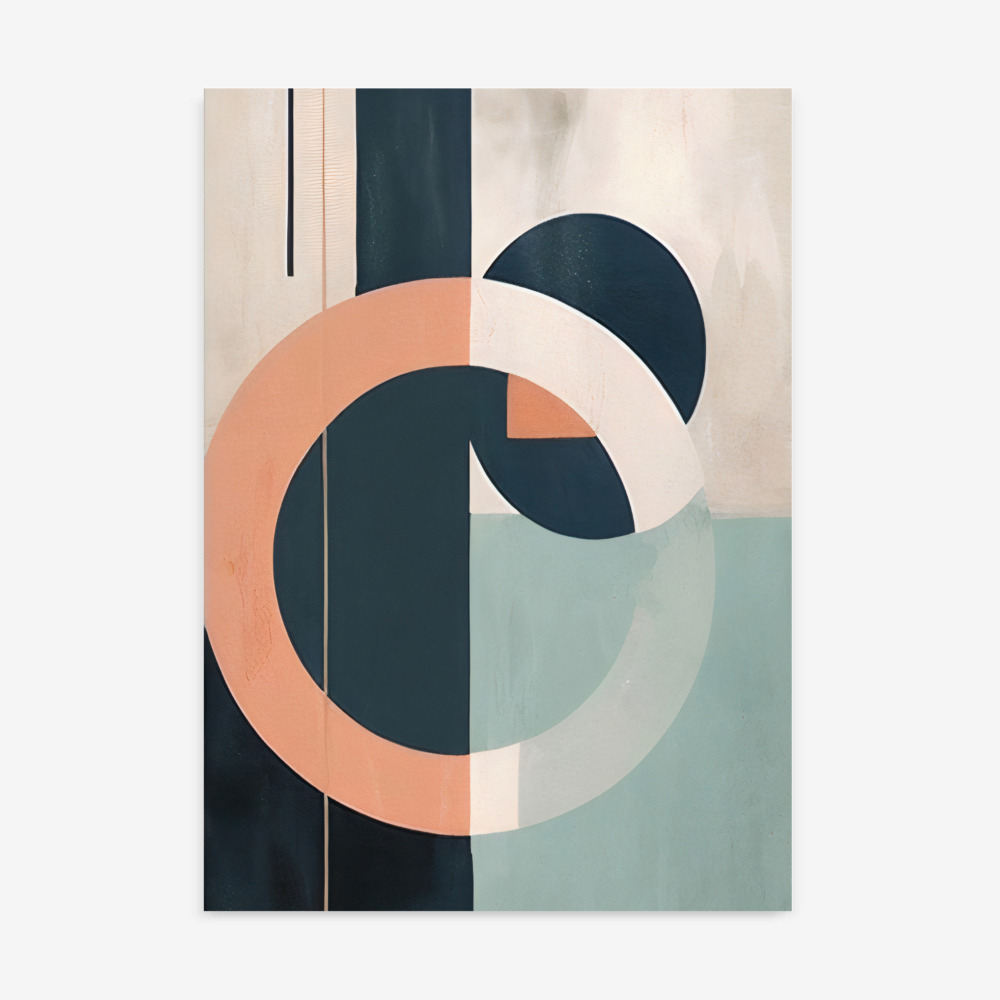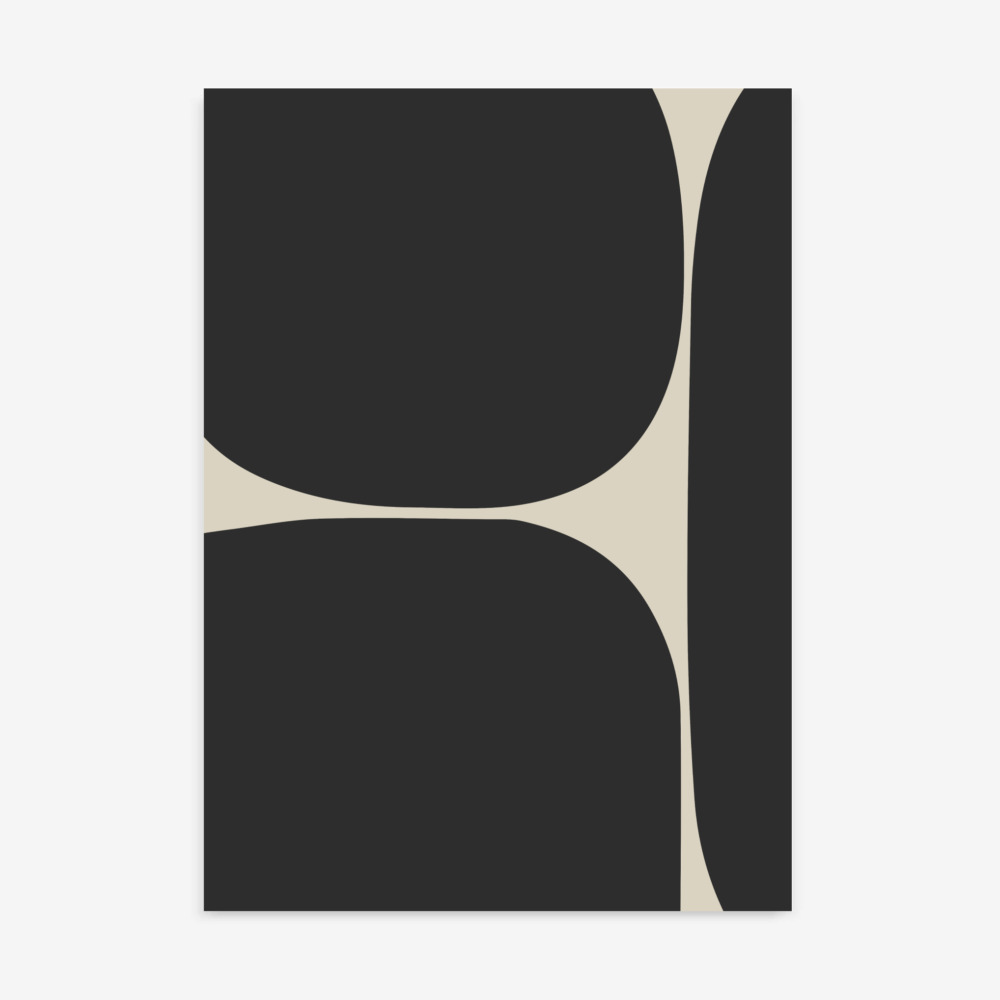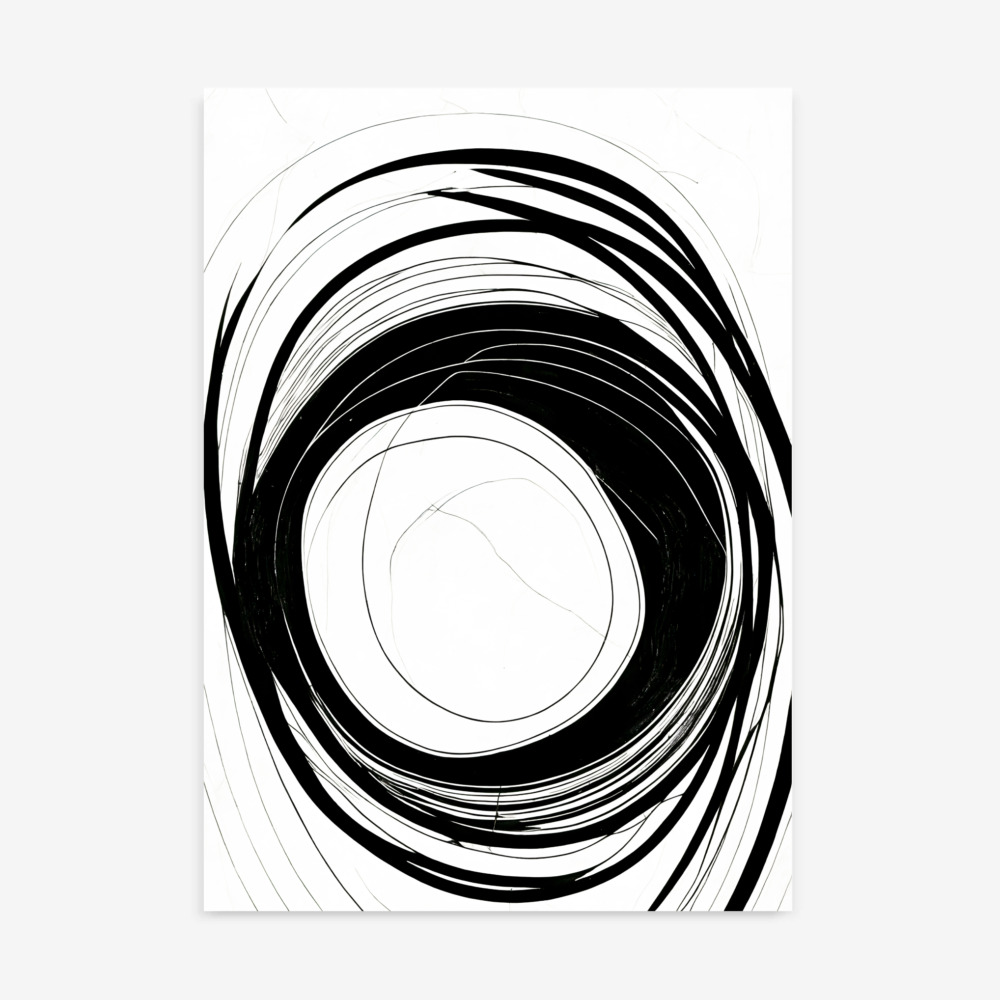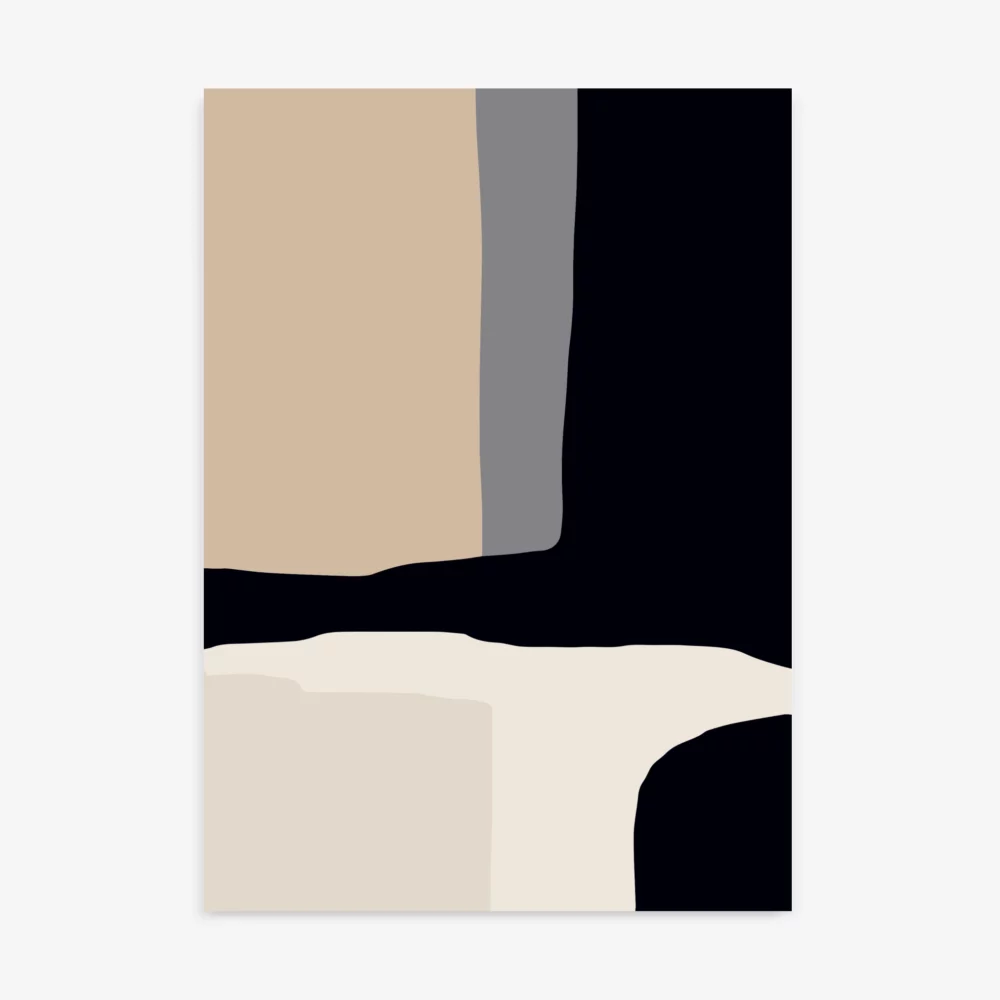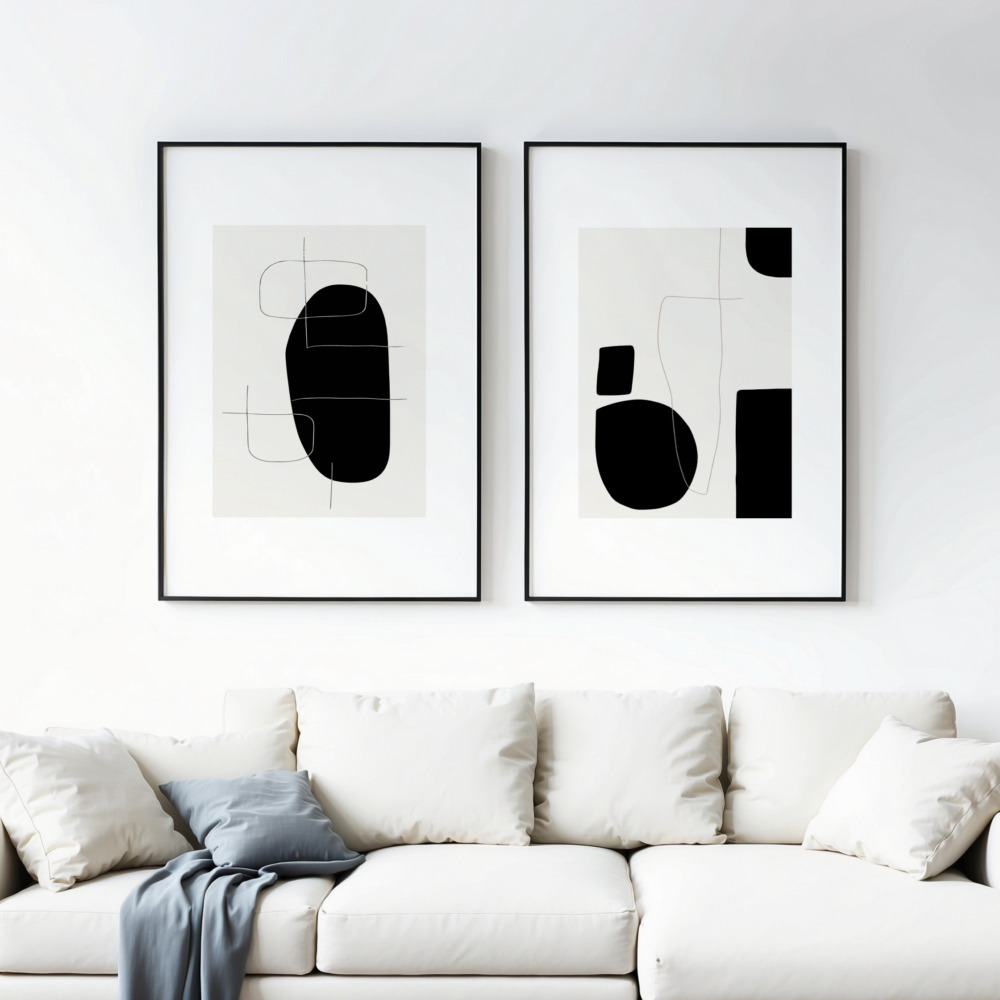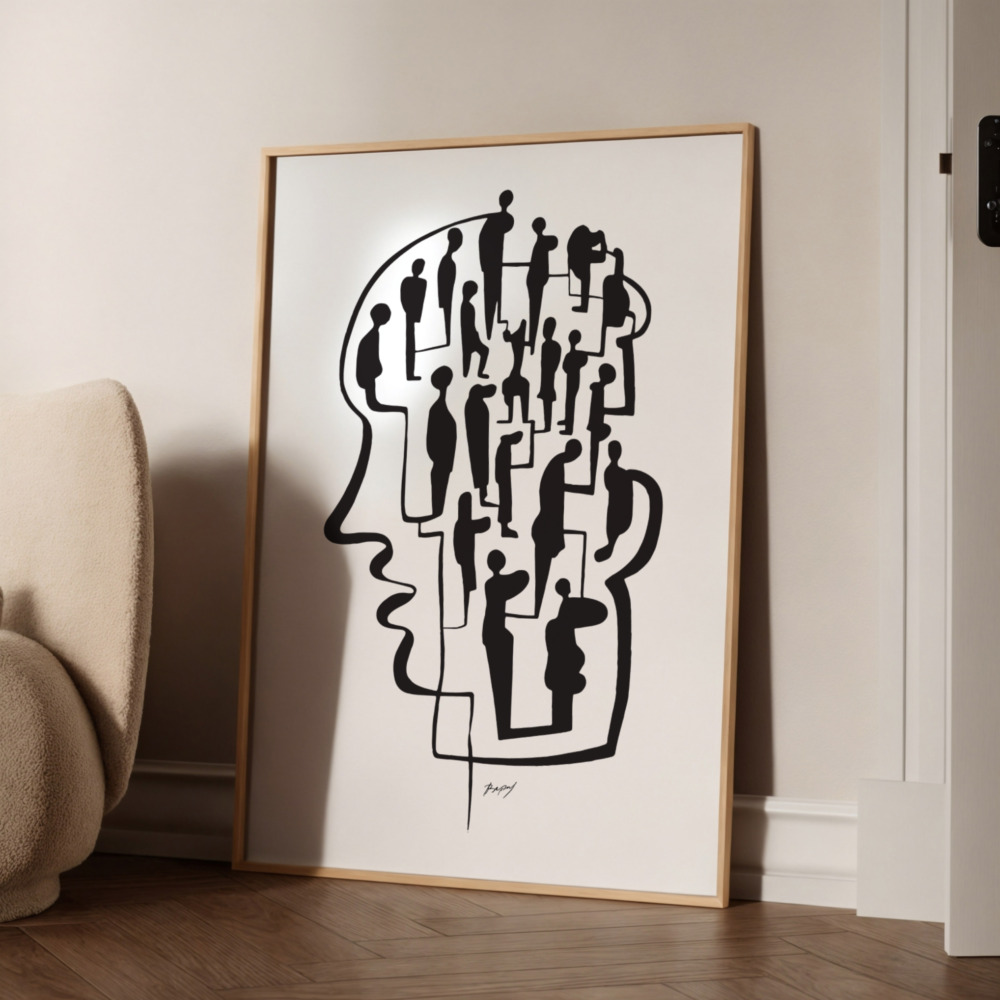When you hear the term “geometric art,” what comes to mind? For many, it’s a world of stark lines, perfect circles, and rigid squares—an aesthetic seemingly reserved for the most austere modern or minimalist spaces. But to confine this powerful art form to a single stylistic box is to overlook its greatest strength: its incredible, almost magical, versatility.
Think of geometric wall art not as a niche style, but as a universal language. It’s a language of form, structure, balance, and rhythm—foundational principles that underpin nearly every design philosophy. By understanding this language, you can find the perfect “dialect” of geometric art to complement, elevate, and even transform any room in your home, no matter your personal style.
This guide will serve as your design Rosetta Stone. We will journey through the most popular interior styles of today—from the serene calm of Scandinavian and Minimalist to the raw texture of Industrial and the free-spirited layers of Boho—and reveal exactly how the clean lines and pure forms of geometric art can create the perfect pairing. Prepare to see this art form in a whole new light.
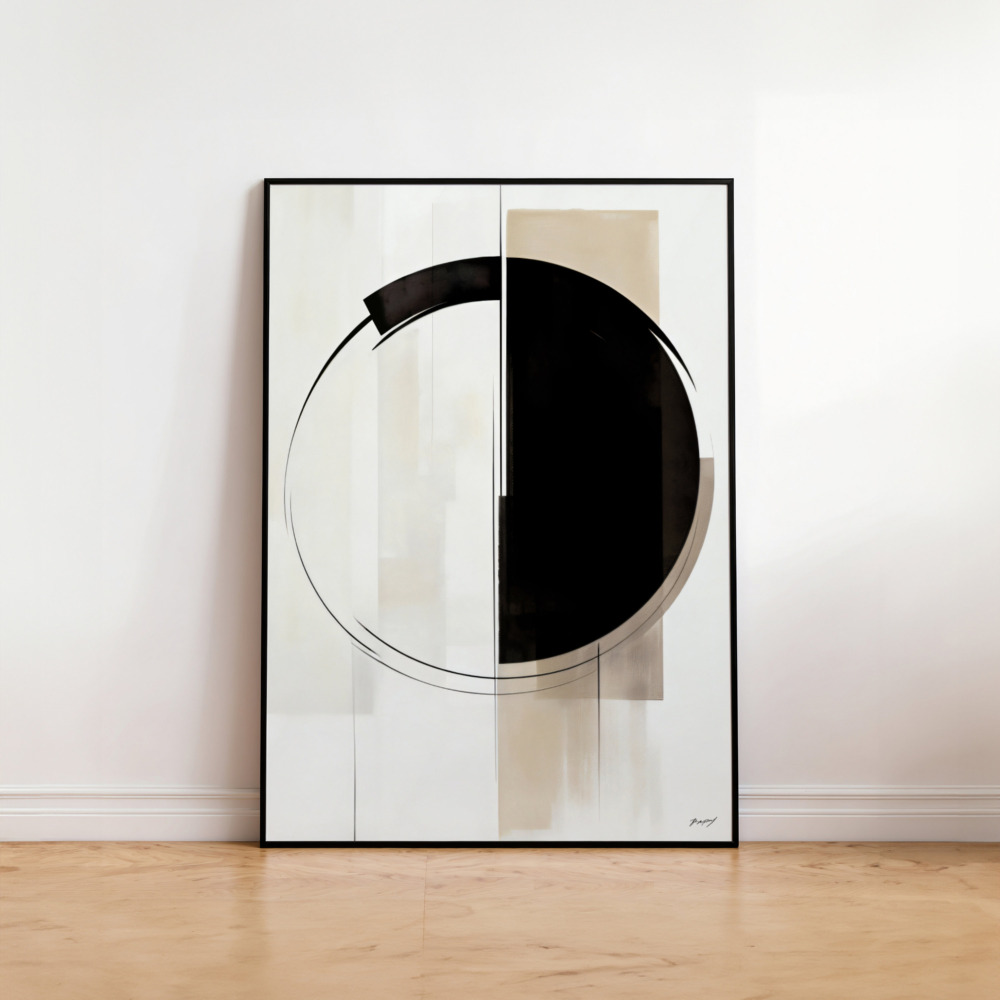
The Universal Appeal: Why is Geometric Art So Versatile?
Before we dive into specific pairings, let’s understand why this style is such a design chameleon. Its power lies in its ability to distill complex ideas into their essential forms.
-
It Provides Structure: At its core, geometric art brings a sense of order and intentionality. The human eye finds comfort in balance and rhythm, which this art form delivers in spades. This underlying structure can anchor a room and prevent it from feeling chaotic.
-
It’s Visually “Quiet”: Unlike a complex landscape or a busy portrait, most minimalist art in the geometric style doesn’t tell a literal story. It communicates through mood, color, and form. This lack of narrative “noise” allows it to integrate into a space without overwhelming it.
-
It Speaks the Language of Architecture: Geometric art echoes the fundamental lines of a room—the rectangles of doorways and windows, the straight lines of walls and floors, the curves of an arched hallway. This creates a natural, harmonious dialogue between the art and the space it inhabits.
Now, let’s explore how to put this versatile art form to work.
1. The Minimalist Sanctuary: A Match Made in Heaven
The Style: Minimalism is the philosophy of “less is more.” It’s about stripping away the non-essential to create a serene, uncluttered, and highly intentional space. The palette is typically neutral (whites, beiges, greys), and every object has a purpose and room to breathe.
Why Geometric Art Works: This is the most natural pairing. Minimalism and geometric art share the same DNA. Both celebrate clean lines, negative space, and the beauty of pure, essential form. The art doesn’t add clutter; it reinforces the room’s core principles of order and clarity.
How to Style It:
-
The Solitary Statement: The most powerful choice is often a single, large-scale piece. A massive print featuring a simple black circle on a white background or a composition of two or three balanced rectangles can act as the sole focal point in a living room, creating drama without chaos.
-
Embrace the Monochrome: Black and white art prints are the epitome of minimalist chic. Their high contrast is graphic, sophisticated, and timeless. A gallery wall of different black and white geometric forms is a masterclass in modern decor.
-
Focus on a Single Form: Choose prints that explore a single, elegant shape. A series of arches in different muted tones or a triptych of line-based squares can create a rhythmic, meditative quality perfect for a bedroom or a quiet office space.
When choosing wall art for a minimalist home, think of it as a piece of sculpture for your wall—it’s all about form and presence.
2. The Scandinavian Retreat: Structure Meets Softness
The Style: A close cousin to minimalism, Scandinavian (or Nordic) design infuses simplicity with warmth and comfort (Hygge). It pairs clean lines with natural, rustic materials like light wood, wool, and linen. The goal is a space that is functional, bright, and inviting.
Why Geometric Art Works: Geometric art provides a perfect counterpoint to the soft, natural textures of Scandinavian decor. It adds a touch of modern structure and graphic “punch” that prevents the space from becoming too rustic or folksy. It’s the crisp, clean element that keeps the style feeling fresh and contemporary.
How to Style It:
-
Warm Up the Palette: While black and white works beautifully, consider geometric prints that incorporate the soft, earthy palette of a Nordic landscape: dusty greens, muted blues, warm ochres, and soft terracotta.
-
Frame with Natural Wood: The frame is key. A simple, light oak or birch frame will instantly connect the modern art to the natural, rustic elements of the room.
-
Mix with Other Textures: Hang a geometric print above a soft, boucle sofa or a linen-covered bed. The contrast between the art’s clean lines and the fabric’s soft texture is what creates that signature Scandinavian balance.
3. The Mid-Century Modern Showcase: A Nod to the Masters
The Style: Characterized by the designs of the 1950s and 60s, Mid-Century Modern (MCM) design features clean lines, organic curves, and a mix of natural and man-made materials. Think of the iconic shapes of an Eames lounge chair or a Noguchi coffee table.
Why Geometric Art Works: MCM furniture is essentially functional sculpture, celebrated for its iconic shapes. Geometric art is a natural extension of this. The art’s focus on abstract form, clean lines, and graphic color blocking directly mirrors the design principles of the furniture itself.
How to Style It:
-
Echo the Furniture’s Form: If you have furniture with soft, organic curves, choose art that features circles, ovals, and arches. If your pieces are more linear, opt for prints with strong lines and rectangular compositions.
-
Embrace the MCM Palette: This is your chance to play with color. Look for geometric prints that feature the classic MCM palette of teak, mustard yellow, avocado green, and burnt orange, often grounded with black and white.
-
Create a Triptych: A series of three prints hung vertically or horizontally was a very popular way to display art in the MCM era. A triptych of abstract geometric prints above a long, low credenza is a classic and effective look.
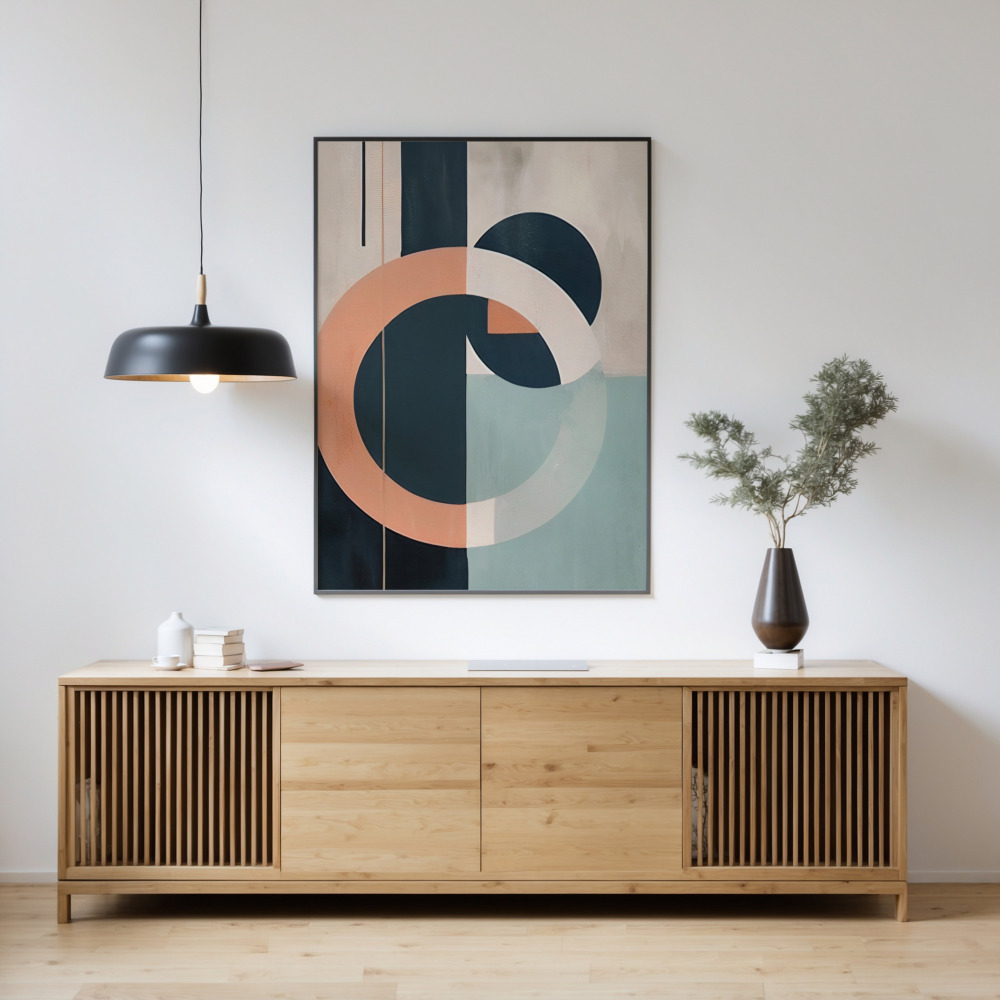
4. The Industrial Loft: Clean Lines Against Raw Texture
The Style: Industrial design celebrates the raw, unfinished beauty of warehouses and factories. It’s defined by exposed brick walls, concrete floors, visible ductwork, and a mix of metal and reclaimed wood.
Why Geometric Art Works: This is a pairing built on the power of contrast. The raw, gritty, and often chaotic textures of an industrial space are beautifully balanced by the clean, precise, and orderly nature of geometric art. The art provides a moment of refined calm amidst the beautiful roughness.
How to Style It:
-
Go Big and Bold: Industrial spaces often have high ceilings and large walls. This is the perfect environment for an oversized piece of geometric wall art. A massive, stark black and white print will hold its own against a dramatic brick wall.
-
Choose a Sleek Frame: A thin, black metal frame is the ideal choice. It echoes the metal elements often found in industrial spaces (window frames, lighting fixtures) and creates a crisp, finished edge.
-
Play with Simple Color Blocking: A large print featuring just two or three solid blocks of color can provide a much-needed focal point and a splash of color to break up the neutral tones of concrete and brick.
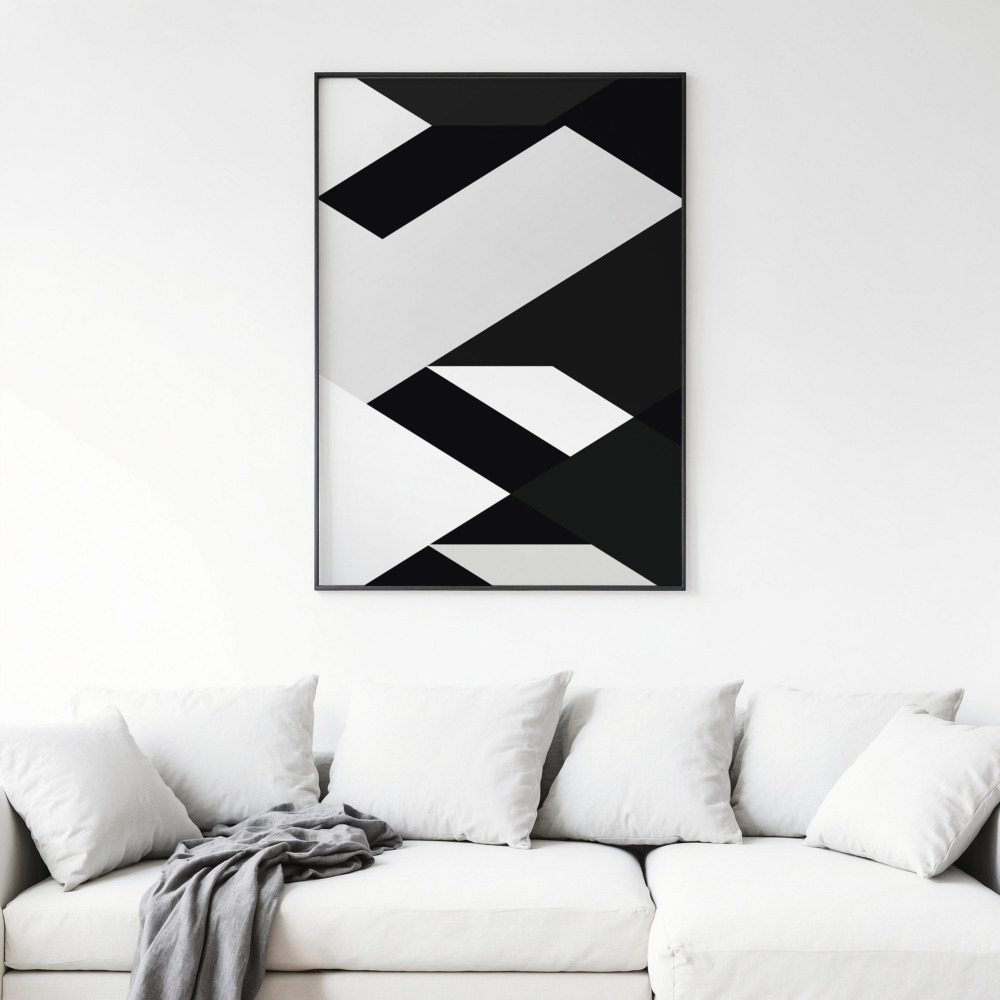
5. The Bohemian Hideaway: A Grounding Force
The Style: Bohemian (or Boho) style is free-spirited, eclectic, and deeply personal. It’s characterized by layers of texture, a mix of patterns, an abundance of plants, and a collection of objects from travels and flea markets. It is warm, relaxed, and full of life.
Why Geometric Art Works: This might seem like the most unlikely pairing, but it’s often the most impactful. In a style that celebrates “more is more,” a piece of simple geometric art can act as a crucial grounding element. It provides a moment of clean, modern structure that prevents the room from tipping into visual chaos. It’s the calm center of the beautiful, creative storm.
How to Style It:
-
Pick a Simple, Bold Shape: In a busy room, a simple piece often has the most power. A print with a single, large arch or a basic sunburst shape can cut through the noise and create a clear focal point.
-
Pull a Color from the Room: Look at your patterned rugs, cushions, and throws. Find a geometric print that features one of those colors in a solid block. This will connect the modern art to the eclectic mix and make it feel intentional.
-
Think in Black and White: When in doubt, a graphic black and white art print is a perfect choice. It provides structure and a modern edge without competing with the room’s vibrant color palette.
The Final Step: Making an Accessible Choice
The idea that great art is an exclusive luxury is a thing of the past. The beauty of choosing wall art today is its accessibility. As you buy art prints online, you’ll find a world of high-quality, affordable art prints at your fingertips. This allows you to experiment with styles and find the perfect pieces without a massive financial investment.
Online shops that specialize in modern decor, like our own Print Studio, have done the hard work of curating collections that speak to these various styles, making it easier than ever to buy minimalist art prints and geometric pieces that you’ll love for years to come.
Conclusion: The Shape of Your Style
Geometric art is far more than a fleeting trend; it is a fundamental design tool. It is the architectural spine that can support any style, the quiet note of order that can harmonize any melody, the touch of modern sophistication that can elevate any space.
By understanding its language and how it interacts with the principles of your own home’s style, you move beyond simply decorating a wall. You begin to curate a space with intention and confidence. The versatility of geometric art means you don’t have to change your style to fit the art; you simply have to find the art that fits your style. Now that you know the secrets to these perfect pairings, we invite you to explore the diverse collection of geometric wall art at Print Studio and find the perfect shape to complete your home.

